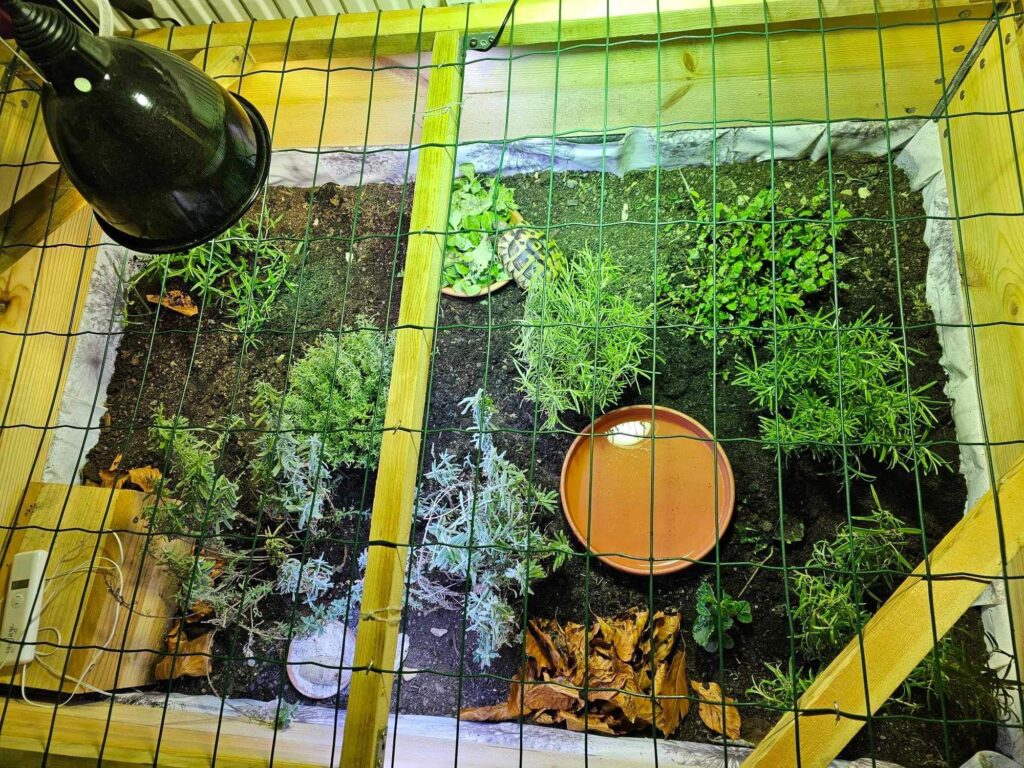The Cold Frame
European tortoises originate from the Mediterranean and are ectothermic animals. They depend on us to simulate the climatic conditions of their original habitat in our much cooler and wetter Northern European climate. This does not mean that they should be kept in terrariums, as they do not tolerate this at all. Since keeping them in a natural manner without technology is not possible in our climate, they are kept naturally in the garden, but with a heated cold frame and outdoor enclosure (see above).
For this, a high-quality, as large and stable as possible cold frame made of 16 mm hollow chamber panels, preferably UV-permeable Plexiglas-Alltop©, is needed. Some cold frames are delivered fully assembled and have an integrated hibernation pit with „predator protection“ (Soli Animalis company).
For proper husbandry, a heater for basic temperature and a warm, bright sun lamp in the cold frame are essential (see Technology).
Choosing the Material
Many companies manufacture greenhouses and cold frames, using different materials in their products. For tortoise keepers, it is important to know that the panels in cold frames or greenhouses, also called „multiwall sheets,“ should be made of Alltop-Plexiglas and at least 16 mm thick. This is because this special material is the only one that allows UV-B radiation to pass through, which is especially important for tortoises. It is a worthwhile investment as such cold frames last a very long time. Cold frames with Alltop are brighter, and the tortoises in them are often more active, especially during the darker times in spring and autumn.
If Alltop is not available, you can also use the cheaper 16 mm polycarbonate. A compromise option is to choose a lid made of Alltop-Plexiglas and the side walls of polycarbonate. These multiwall sheets are available not only in prefabricated cold frames but also separately for DIY projects. When cutting them yourself, it is advisable to always use new saw blades and to tape the cutting edges well, to prevent the material from breaking. Alternatively, you can also purchase already cut-to-size multiwall sheets for DIY projects.
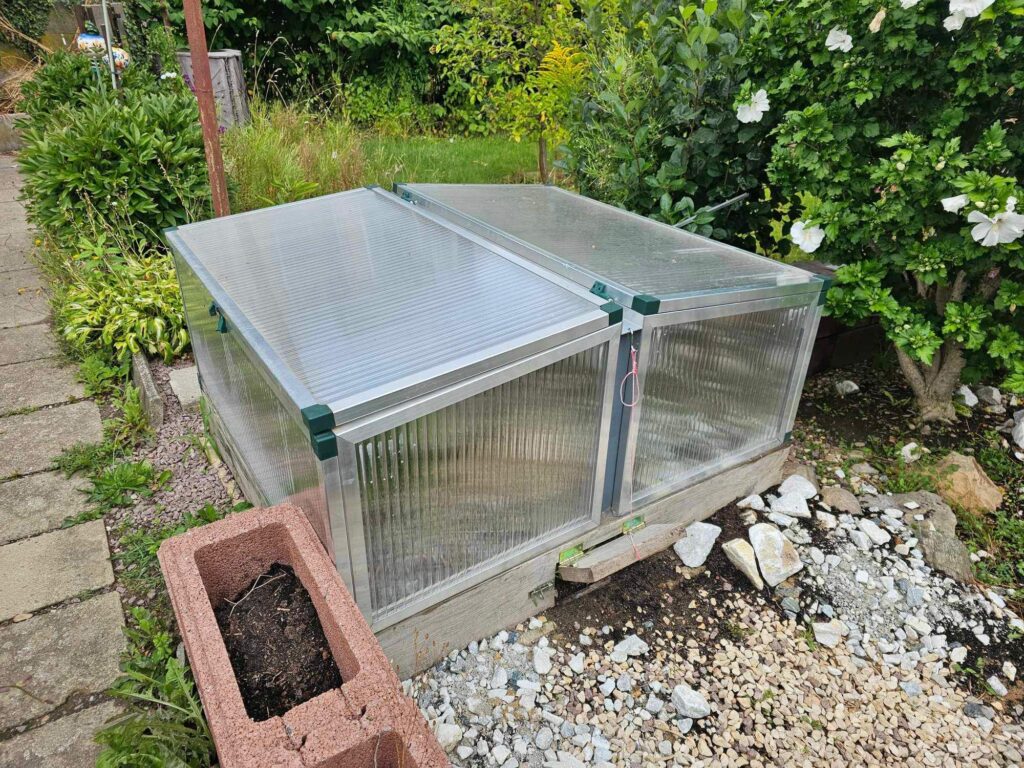
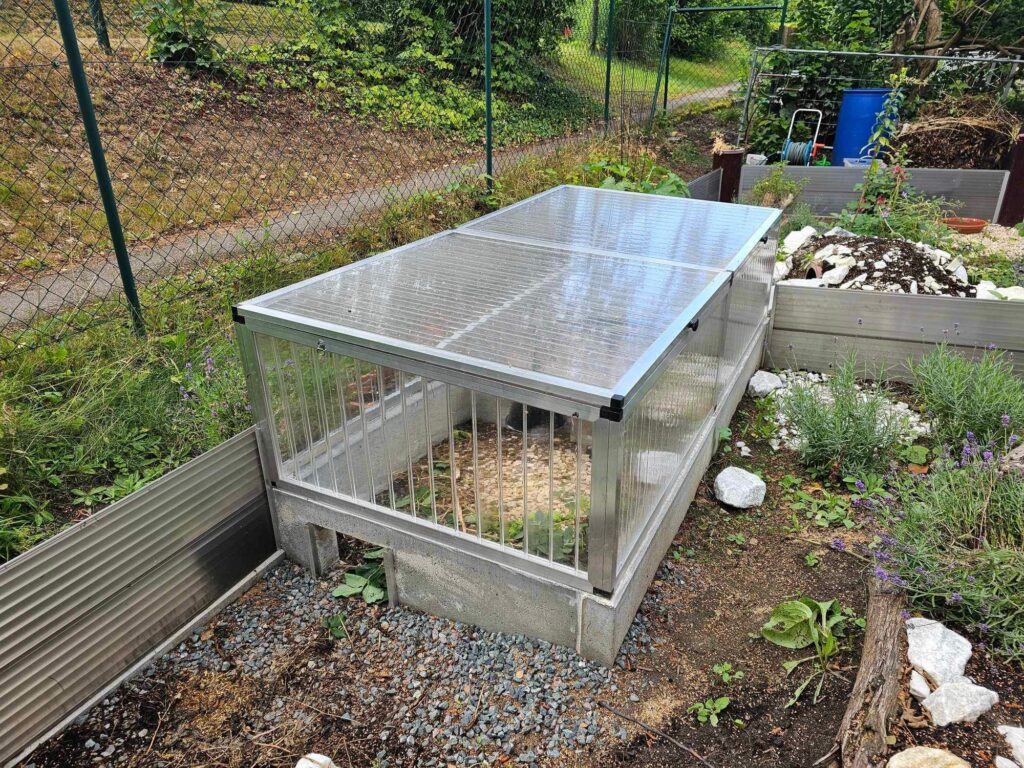
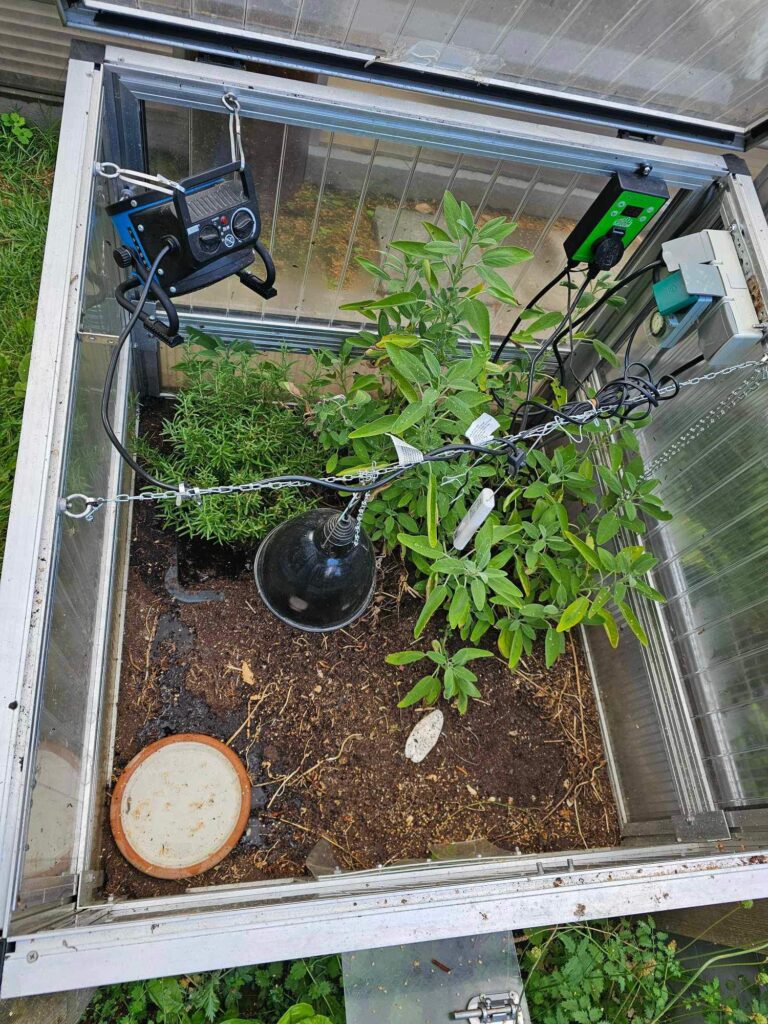
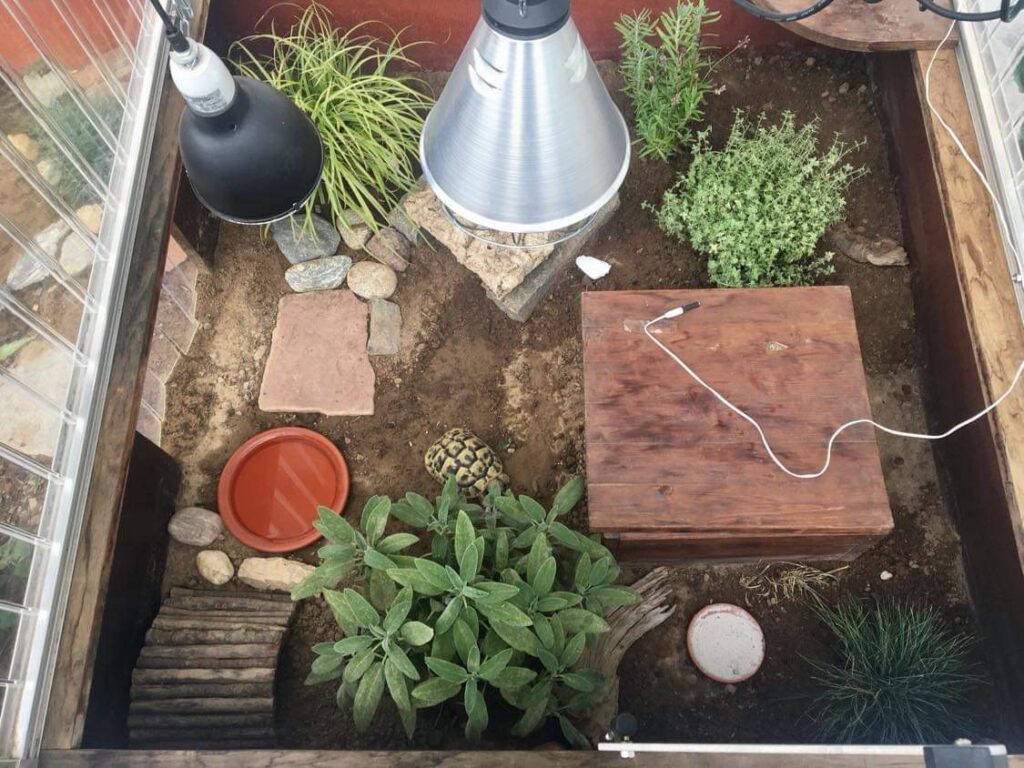
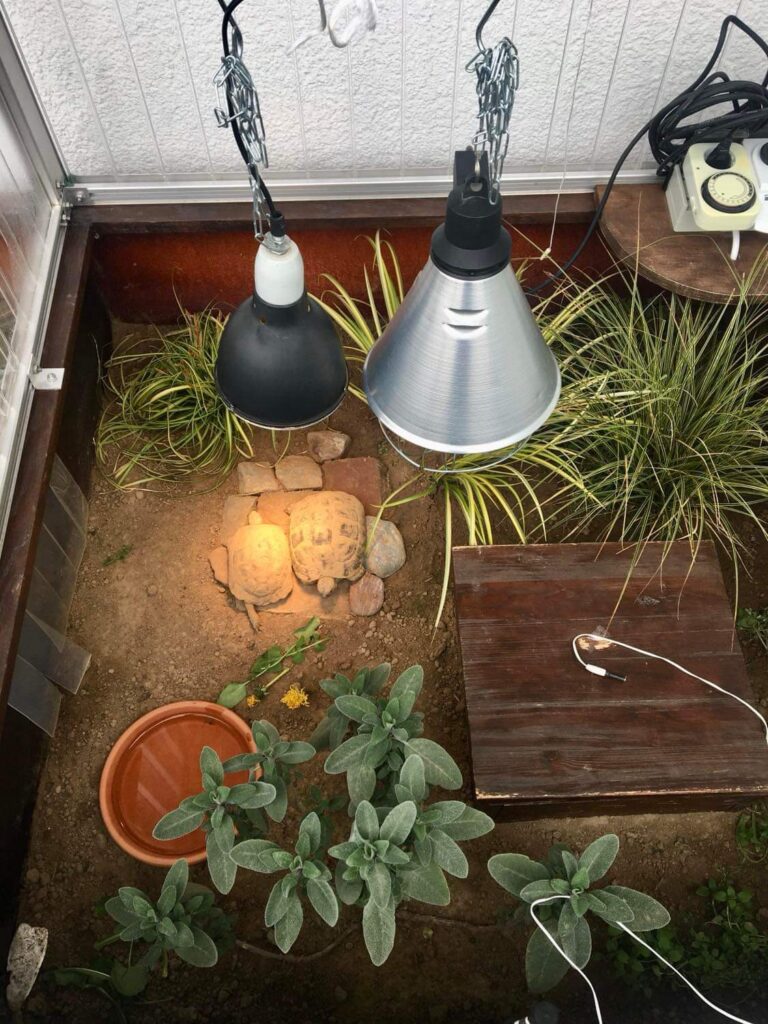
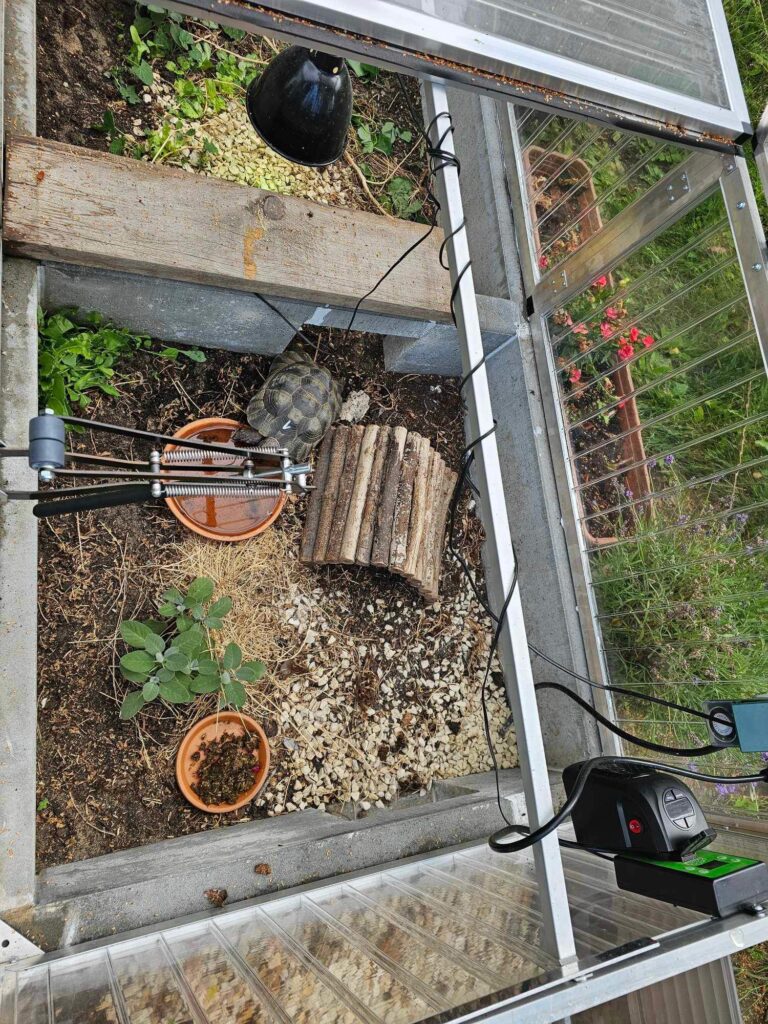
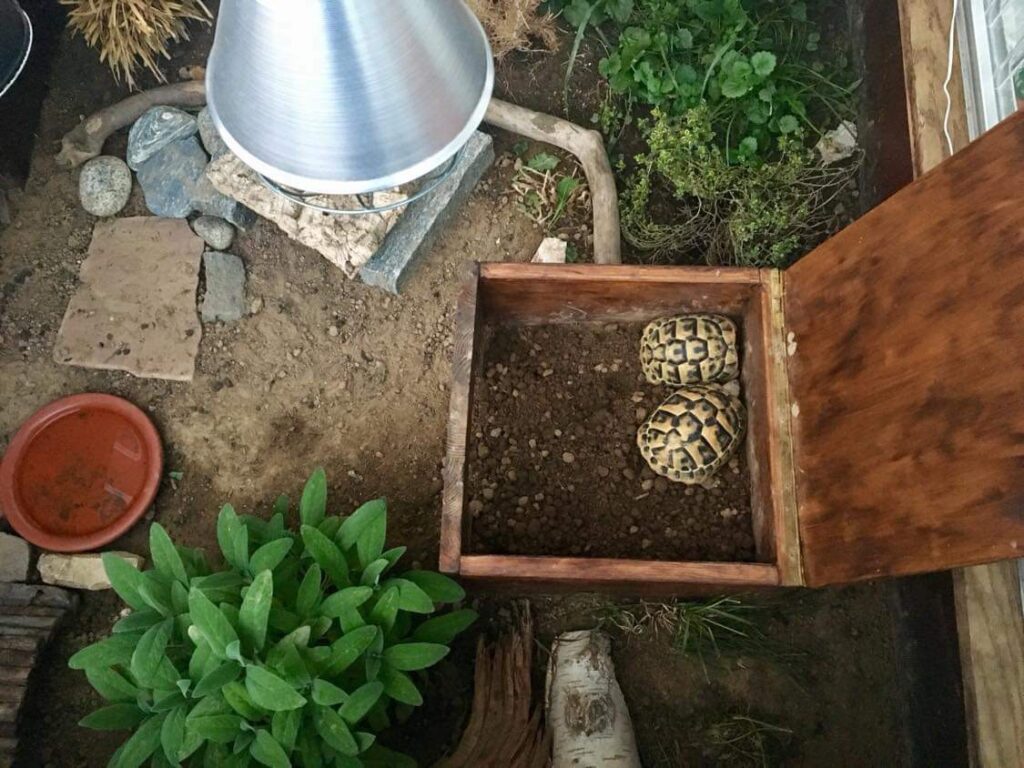
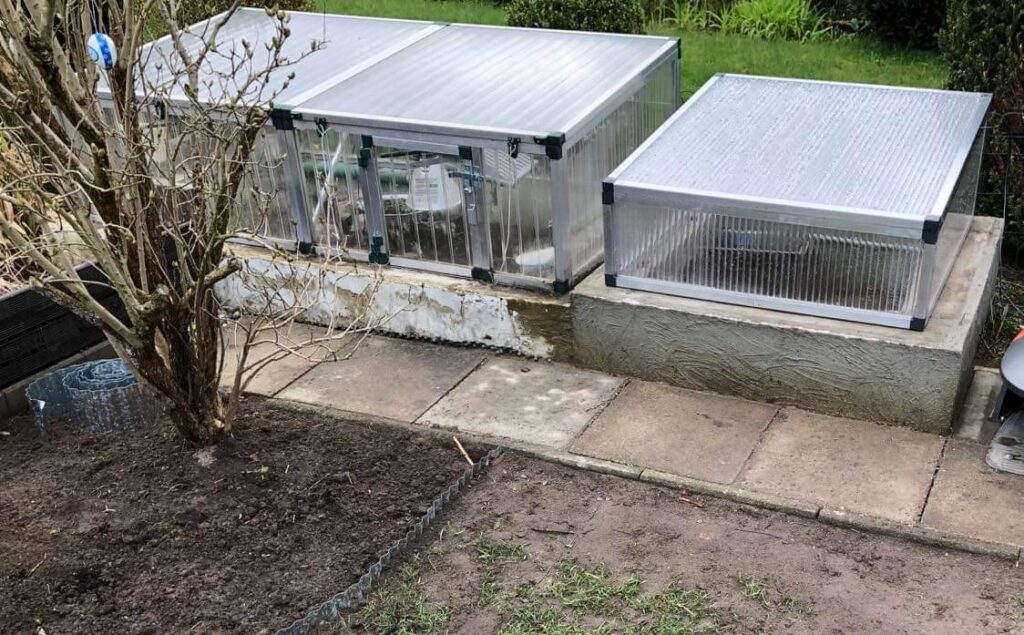
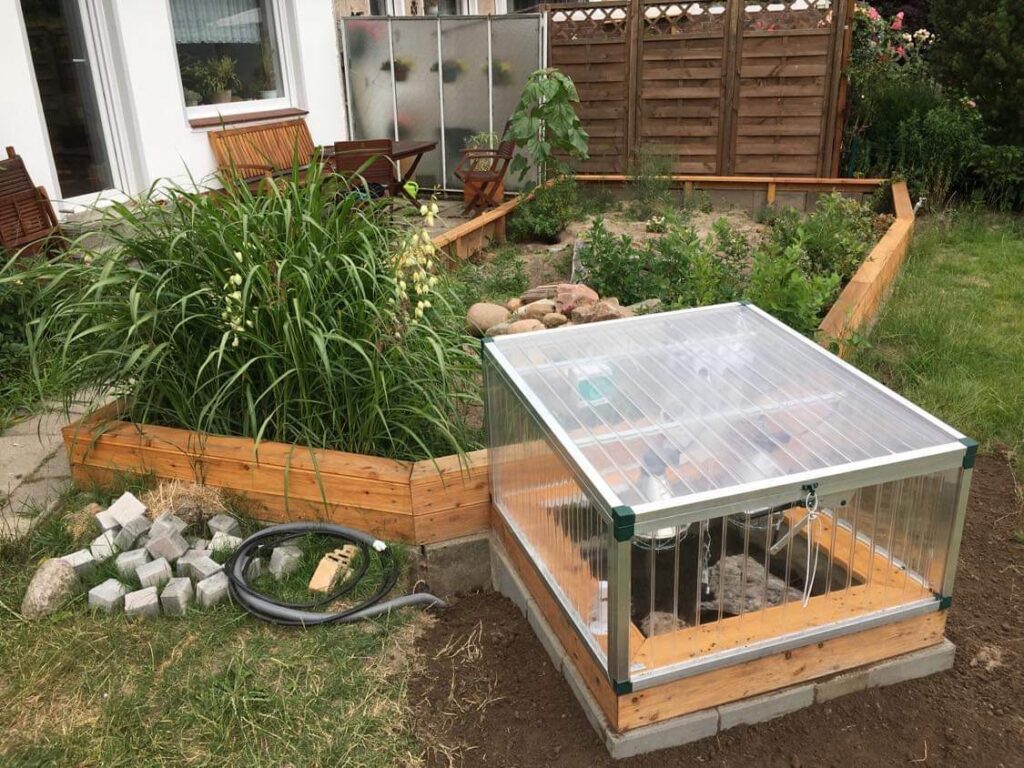
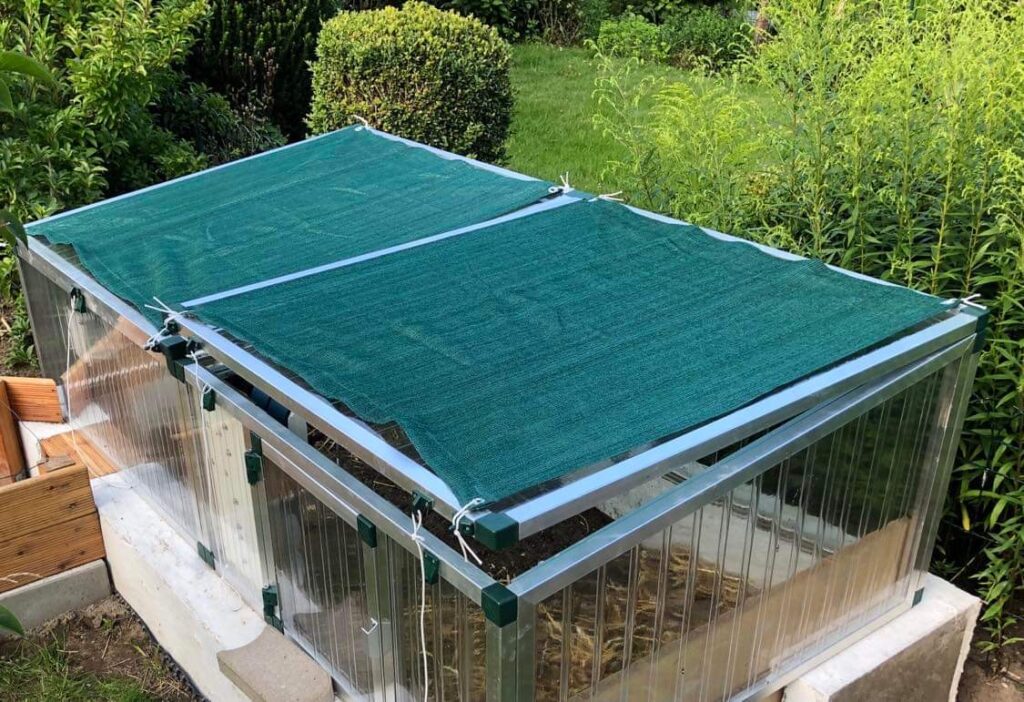
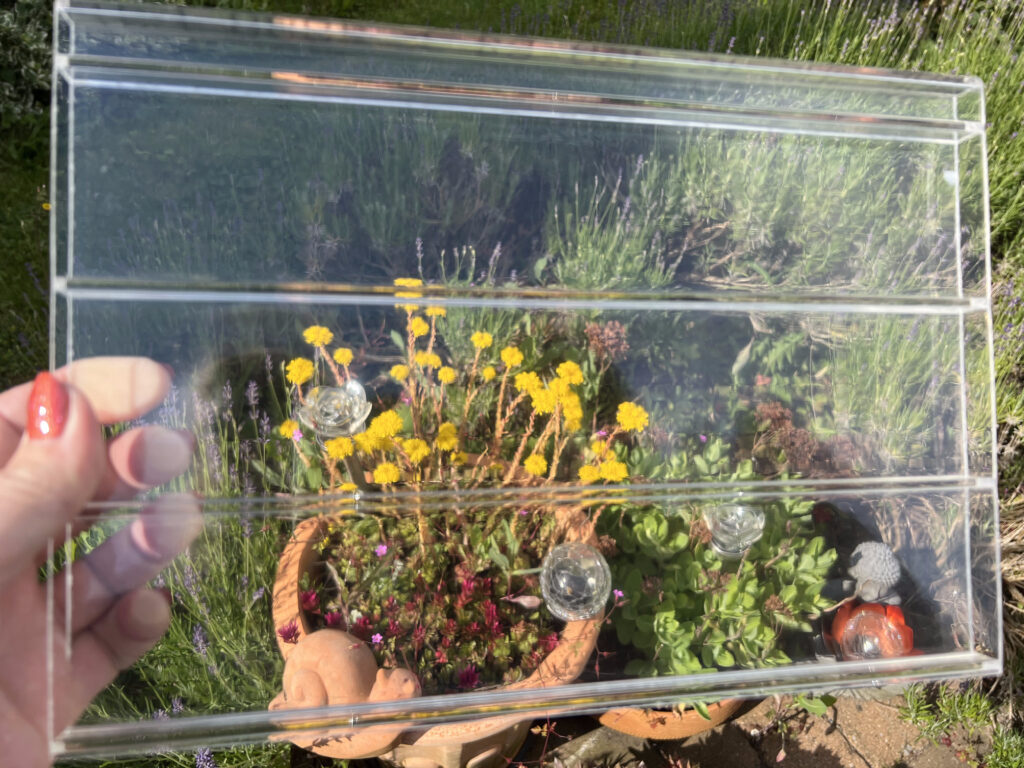
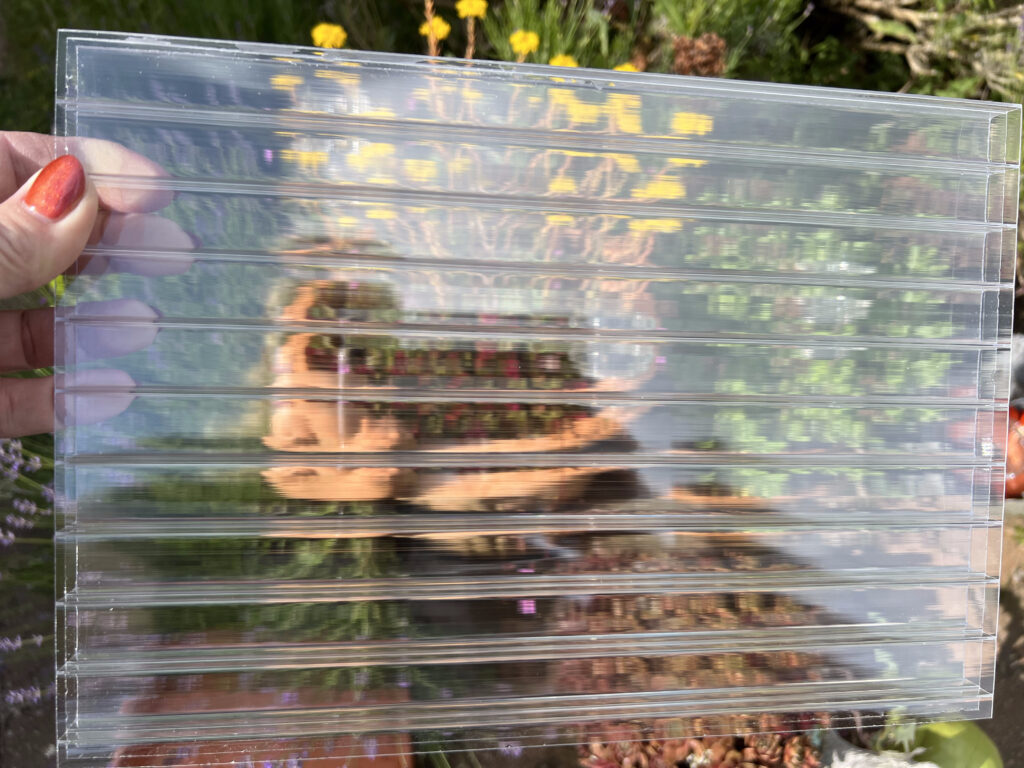
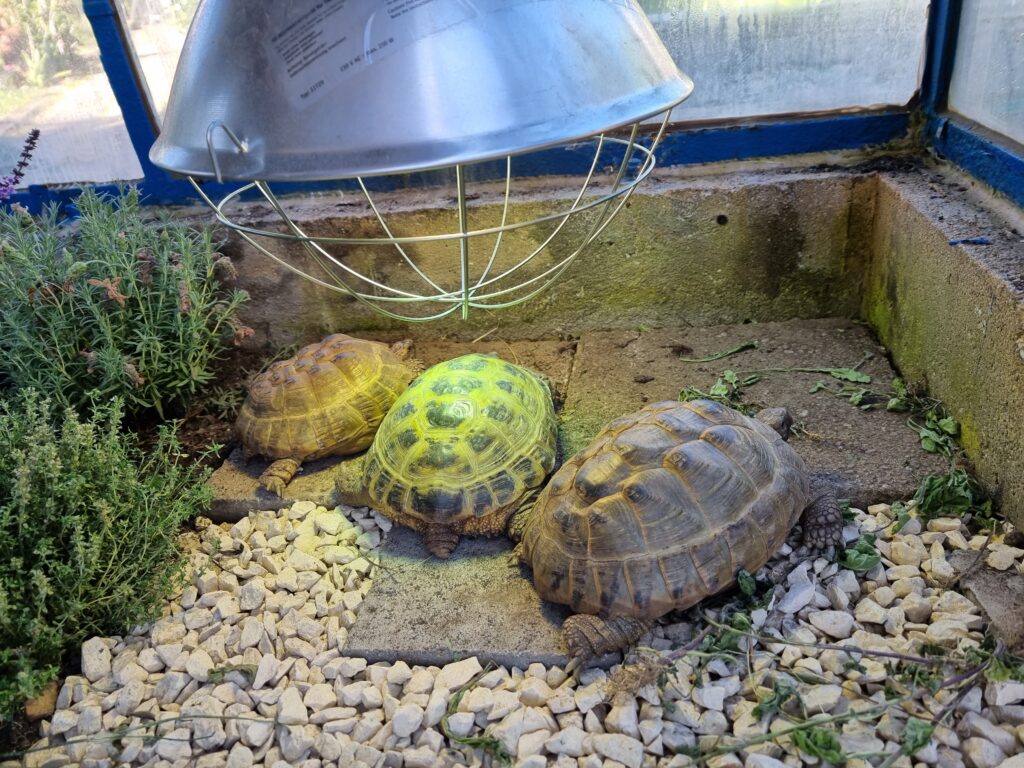
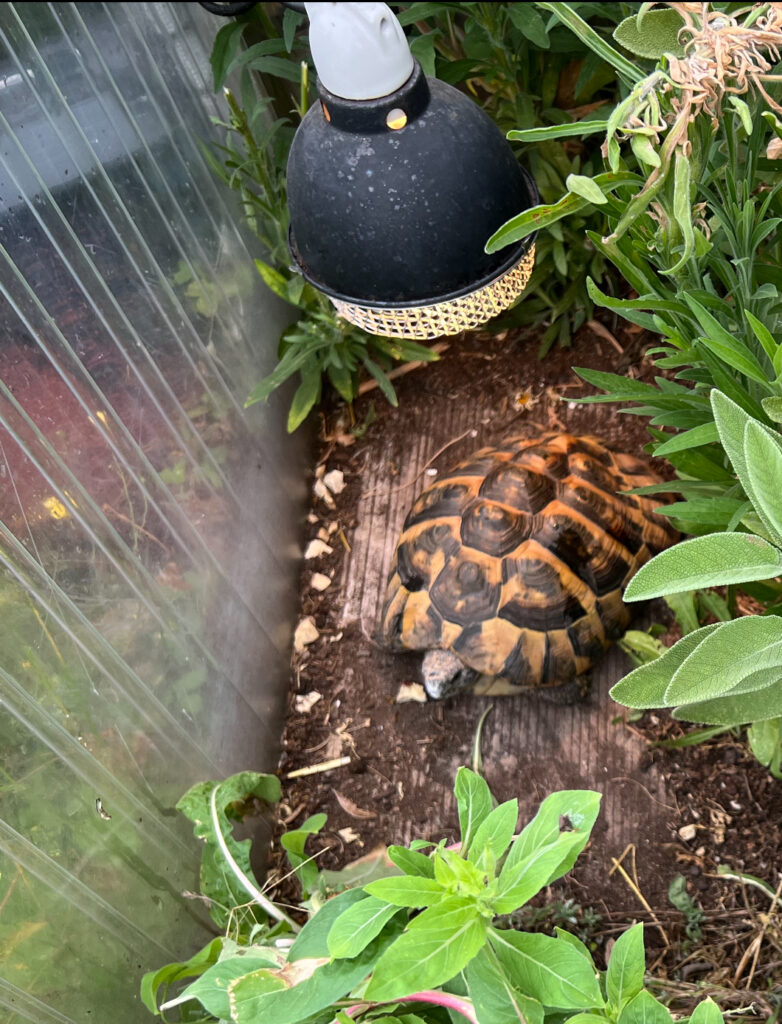
photos: Sandra Seebach, Peter Küpper, Landschildkrötenhilfe Freiberg, Frauke Hustinx
The Outdoor Enclosure
The outdoor enclosure should have sunny spots made of limestone gravel and enough hiding places in the form of caves, hiding and feeding plants. There should be alternating shady and sunny spots. Limestone gravel ensures quick-drying surfaces and a pleasant, warm microclimate. European tortoises are grazers, so ideally they need a self-sustaining enclosure with many different feeding plants. A shallow drinking and bathing area should be available in the outdoor enclosure. The spot should be no deeper than the smallest animal can comfortably stretch its head out to breathe, approximately up to the base of the neck. Plan 10 to 20 square meters of outdoor enclosure per adult animal, with larger always being better.
As pictures often say more than words, here is the very successful, species-appropriate enclosure in a Mediterranean style by Sabine Deubzer from Upper Palatinate. (all photos: S. Deubzer)
Here live 5 tortoises from 2008-2012.
The enclosure was completely rebuilt from 15 to about 45 m2 during the first Corona lockdown. Limestone gravel in various thicknesses was obtained directly from the limestone quarry.
The border is made of WPC decking boards, attached to masonry stones with U-channels. It can be changed, separated, and expanded at any time.
Additionally, a boundary for reducing the enclosure size was installed, which can be used in spring or autumn. The escape-proof border is 56 cm high.
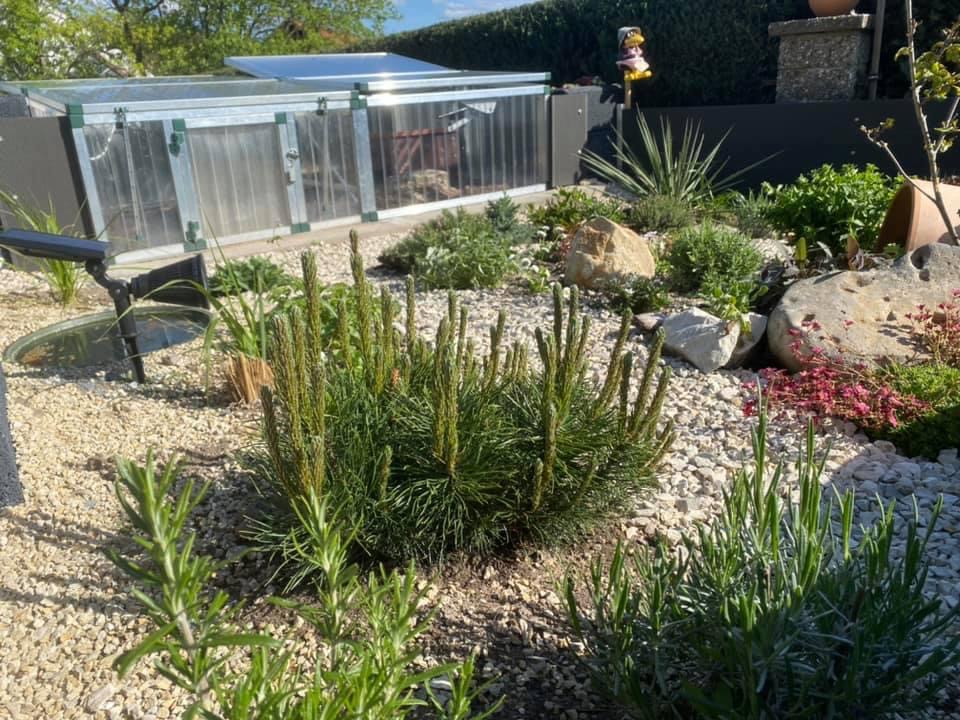
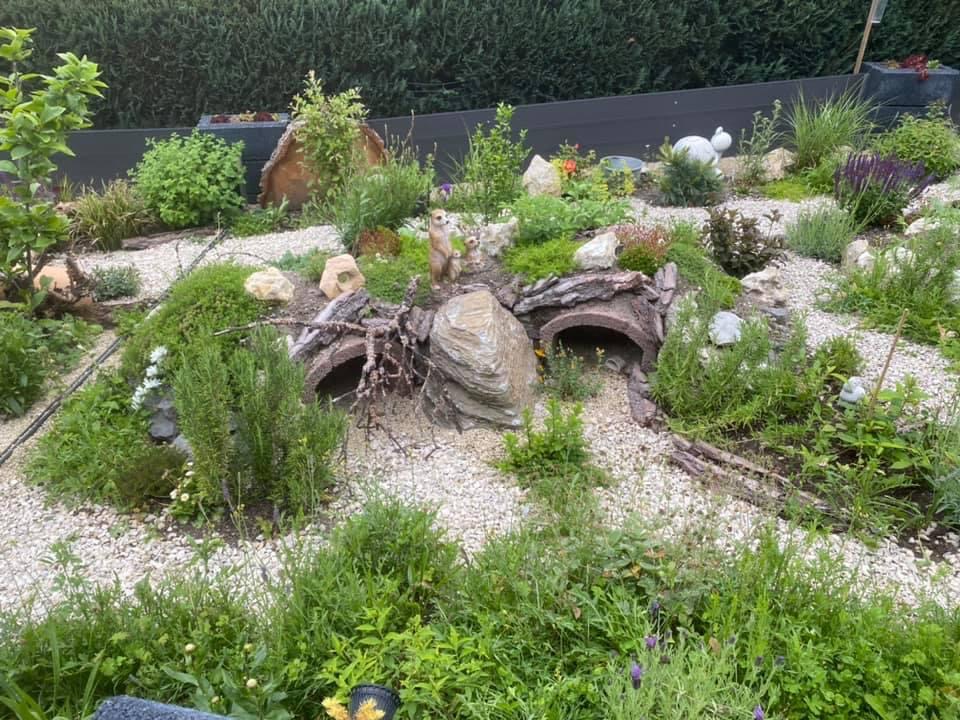
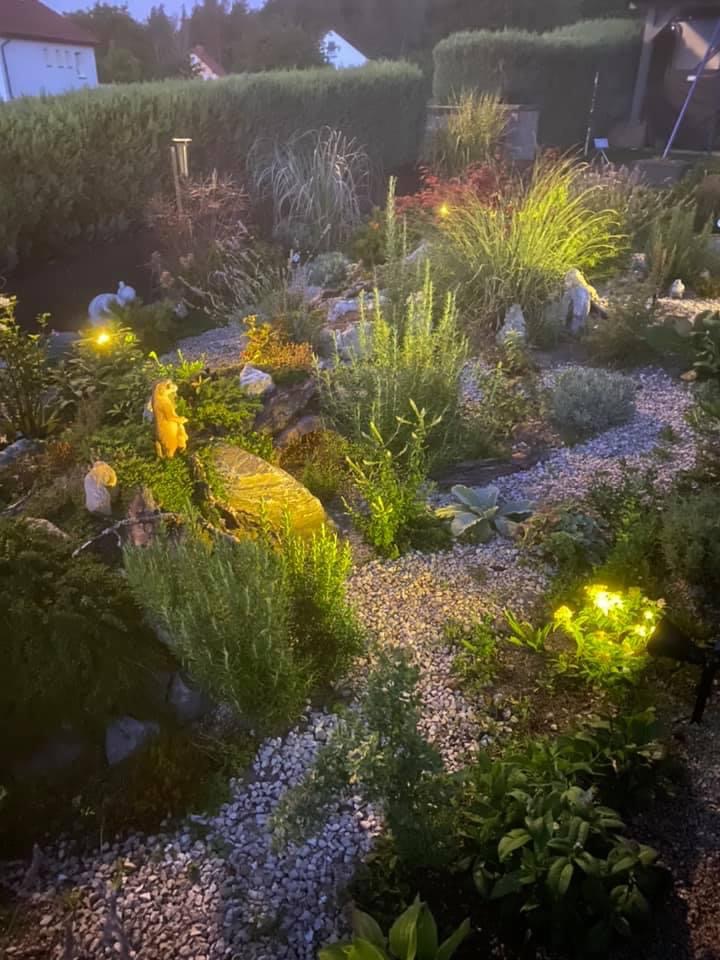
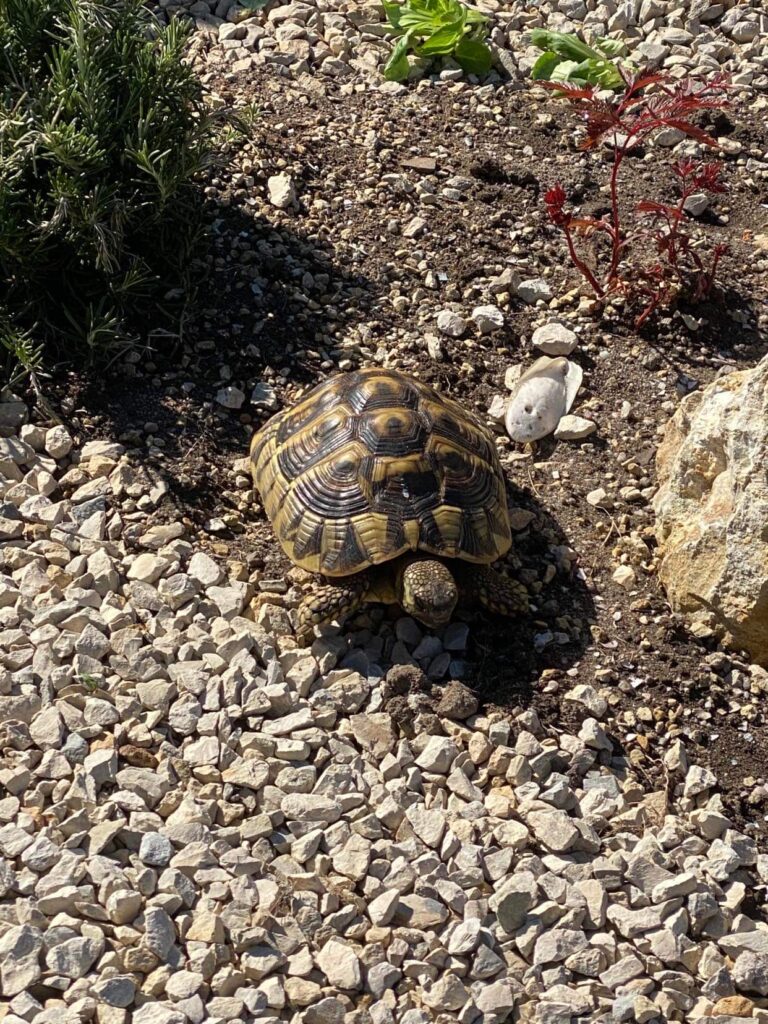
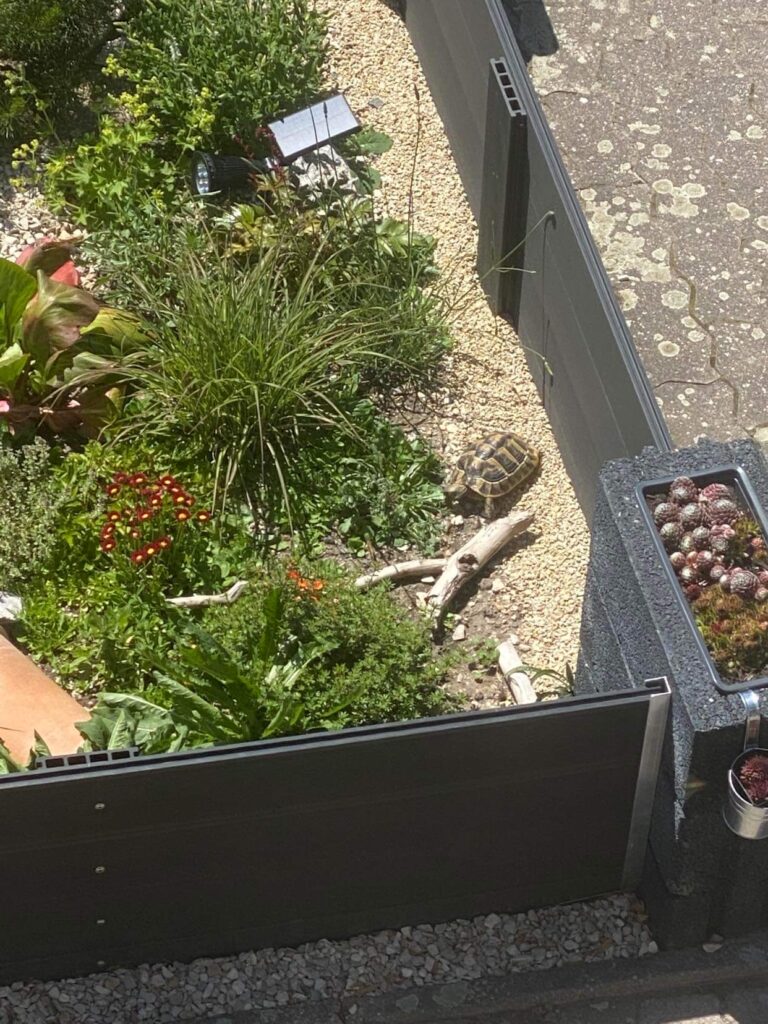
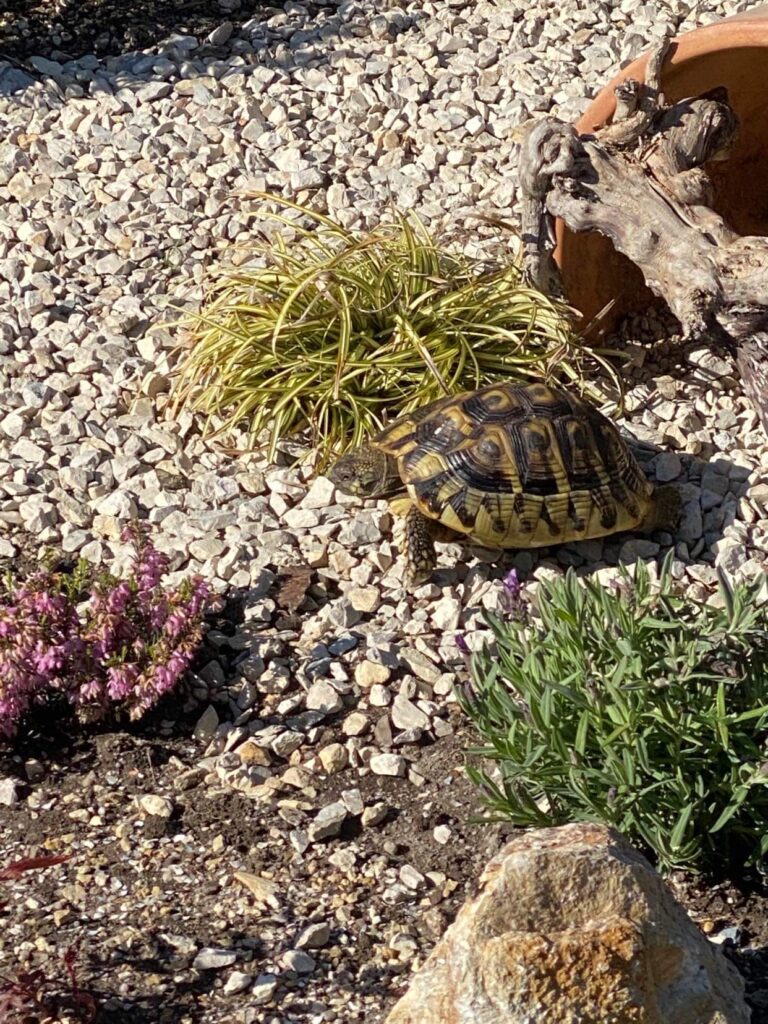
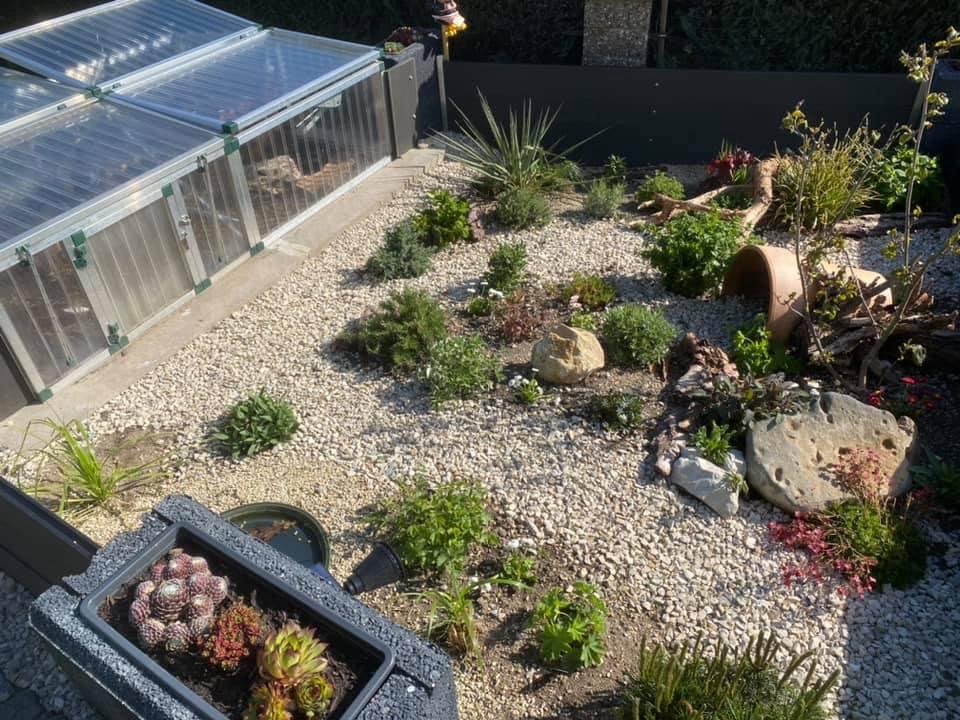
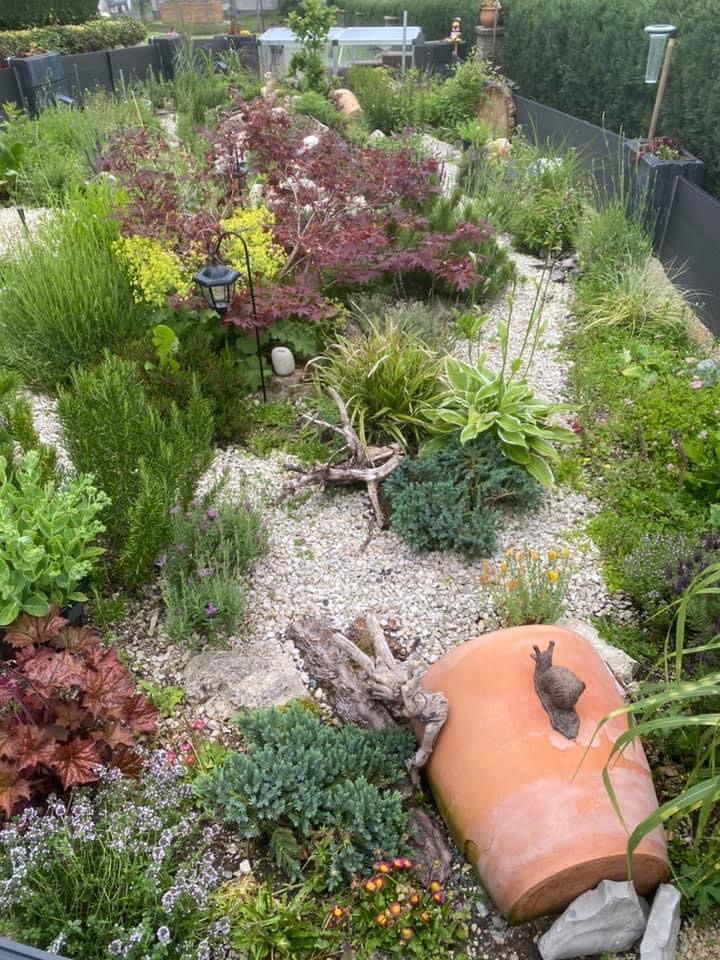
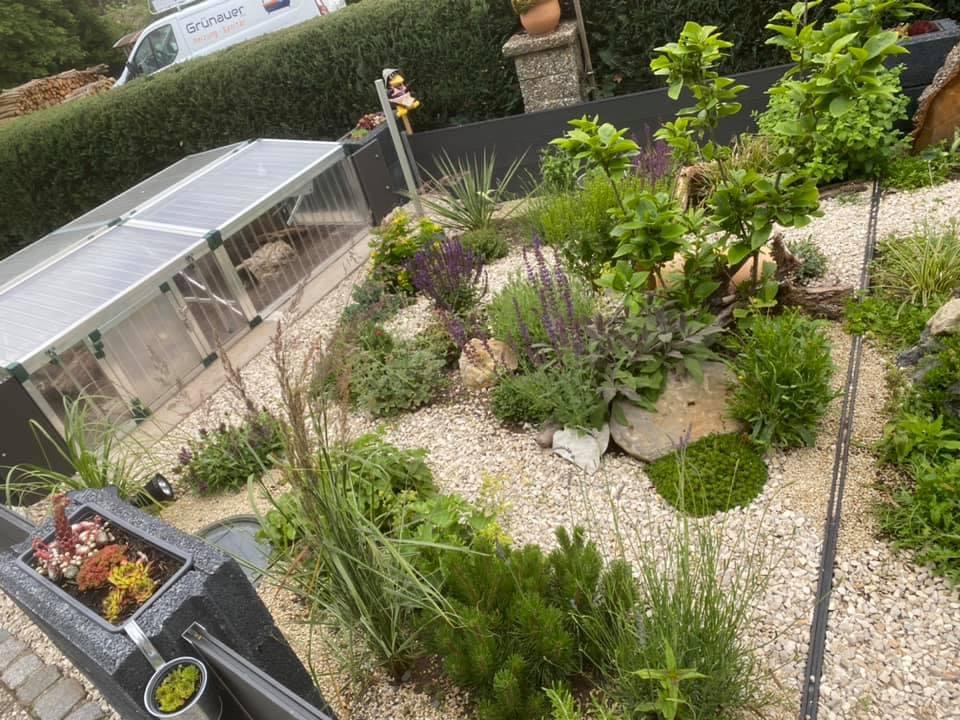
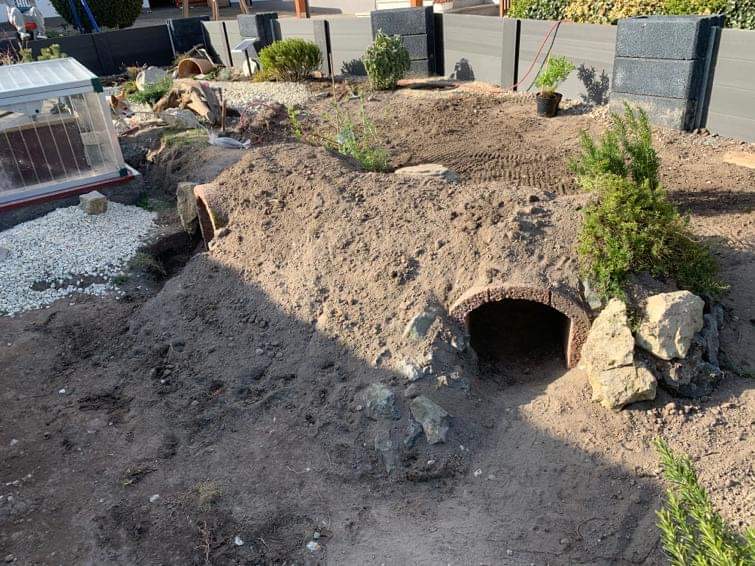
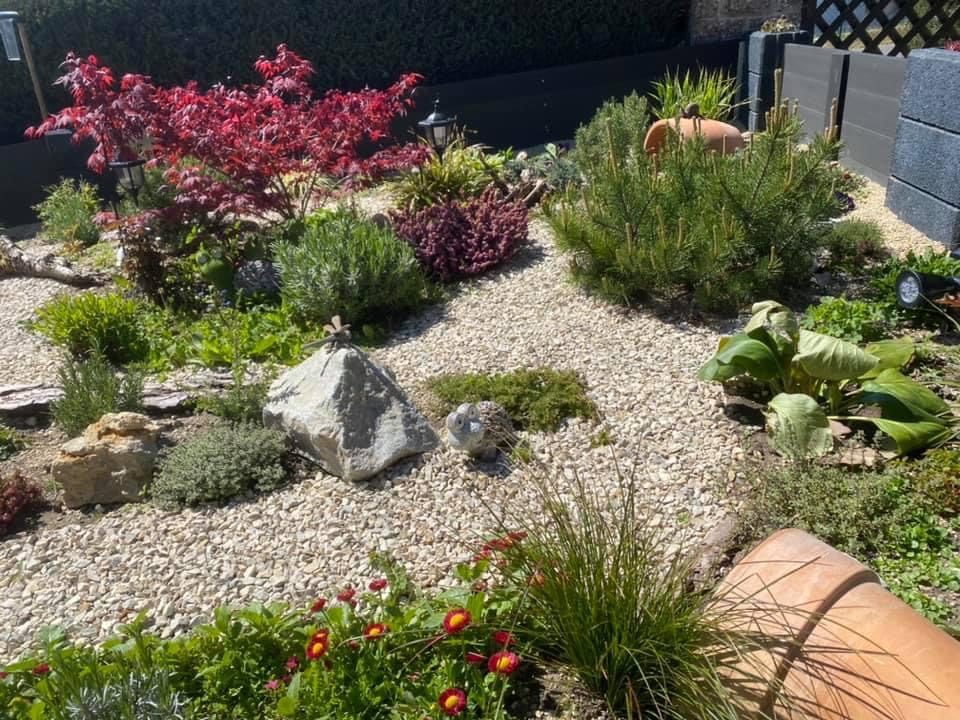
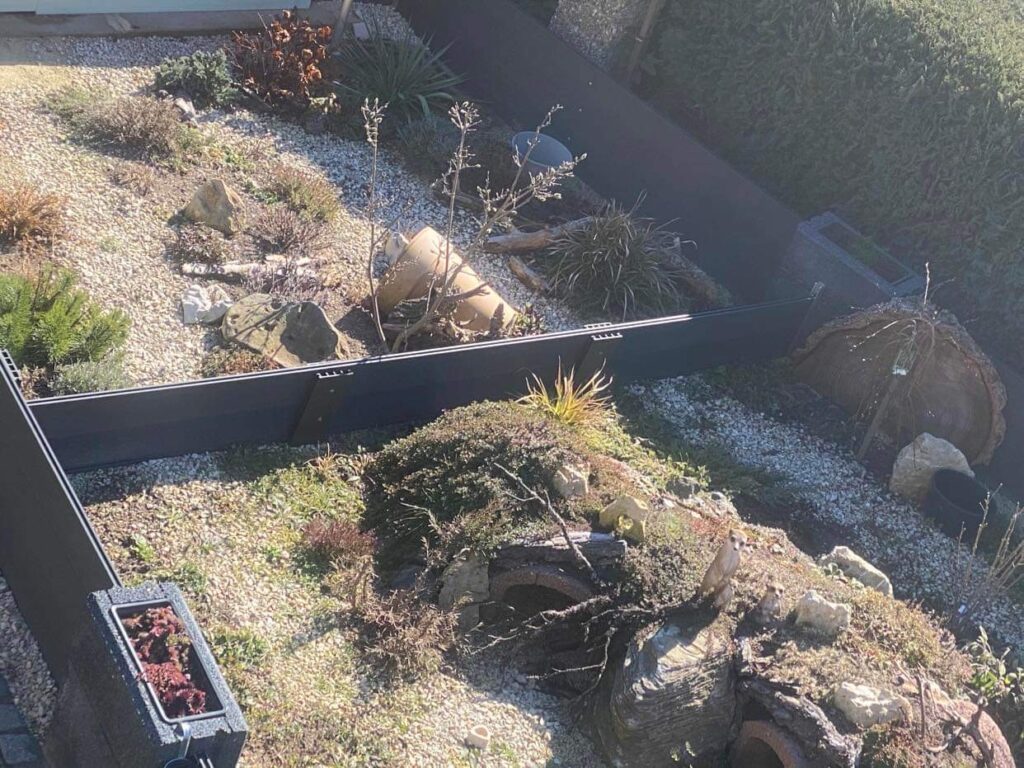
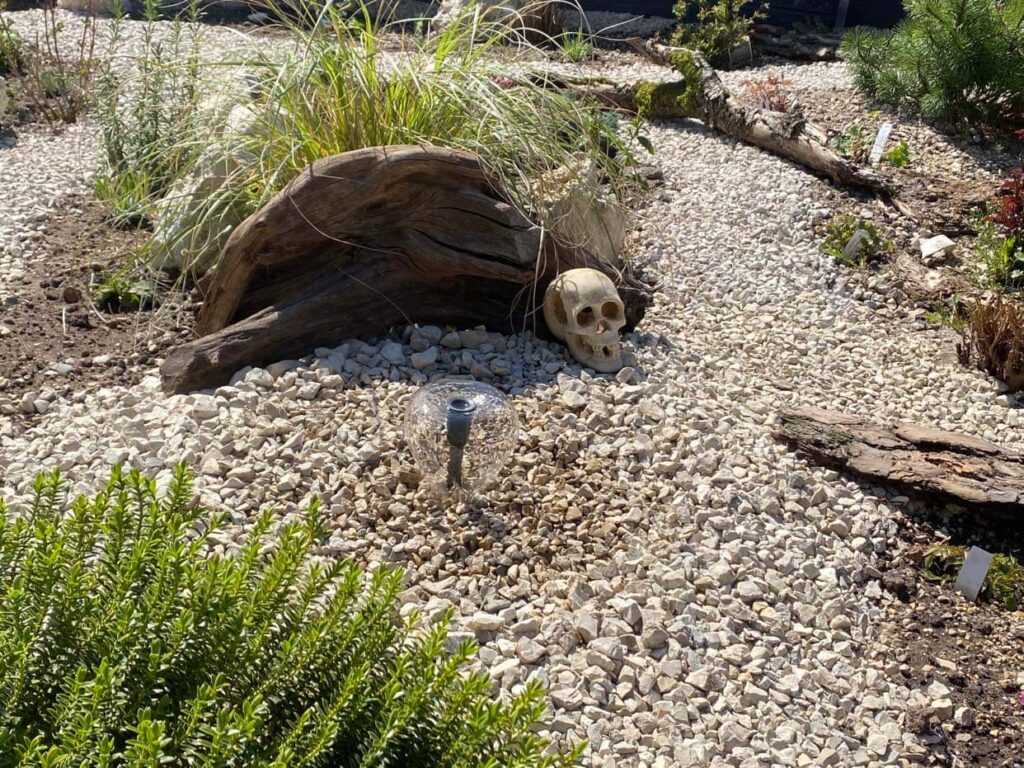
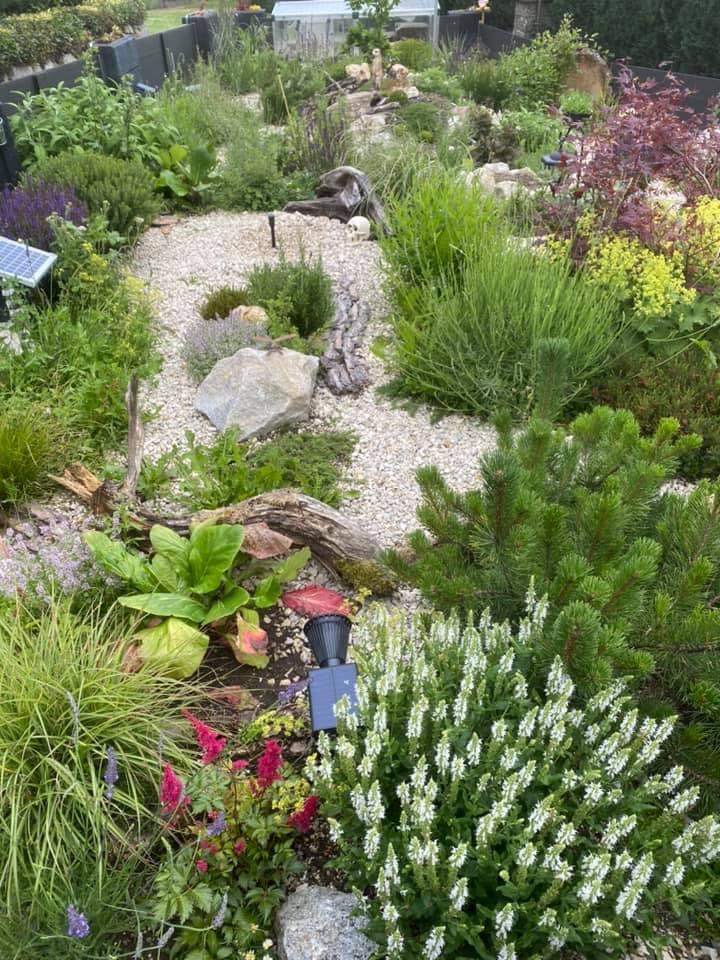
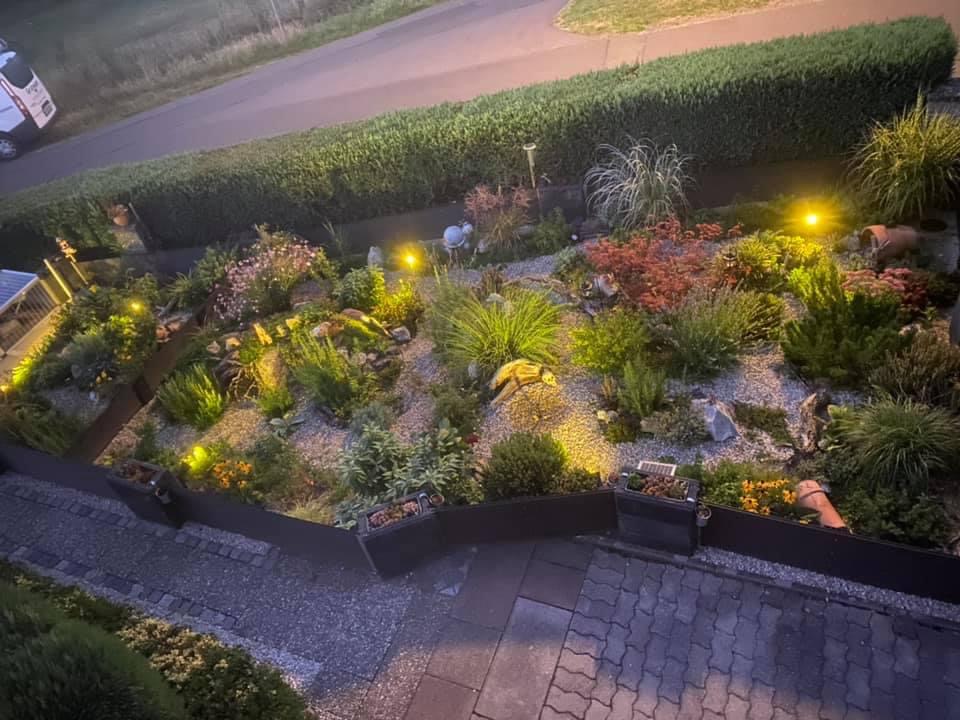
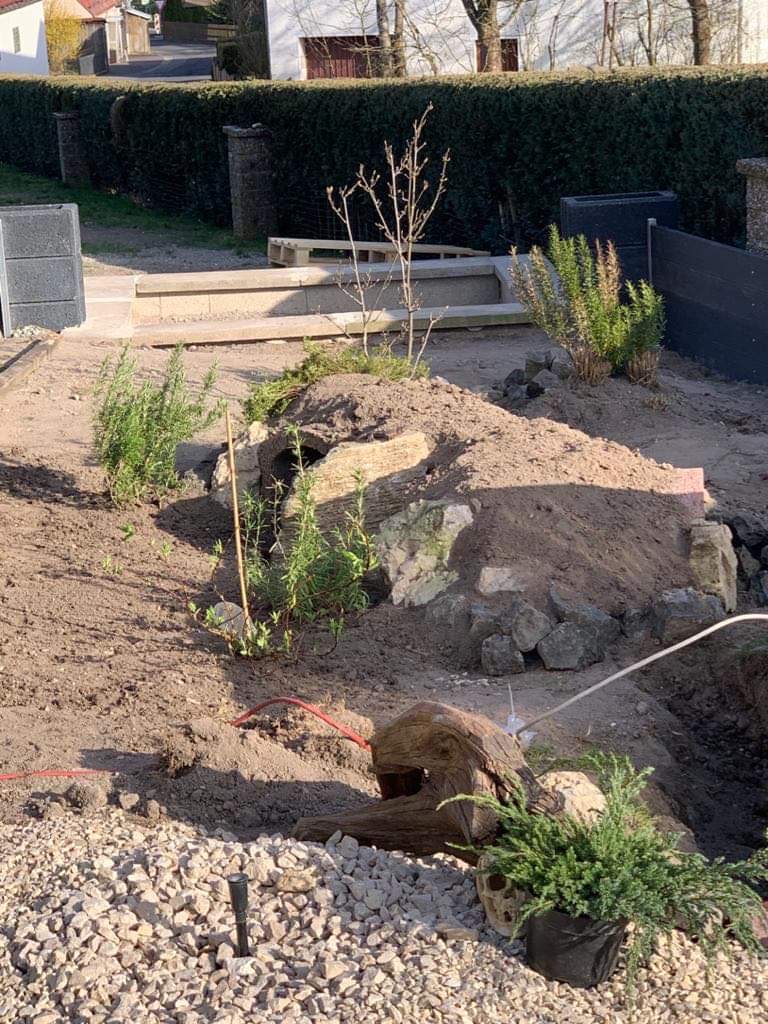
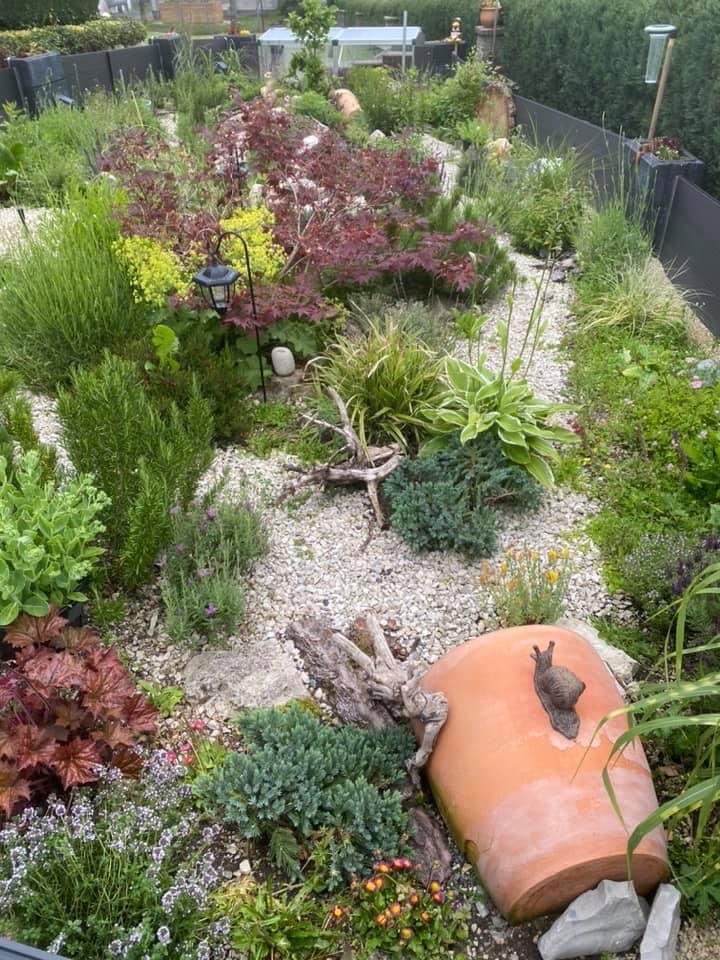
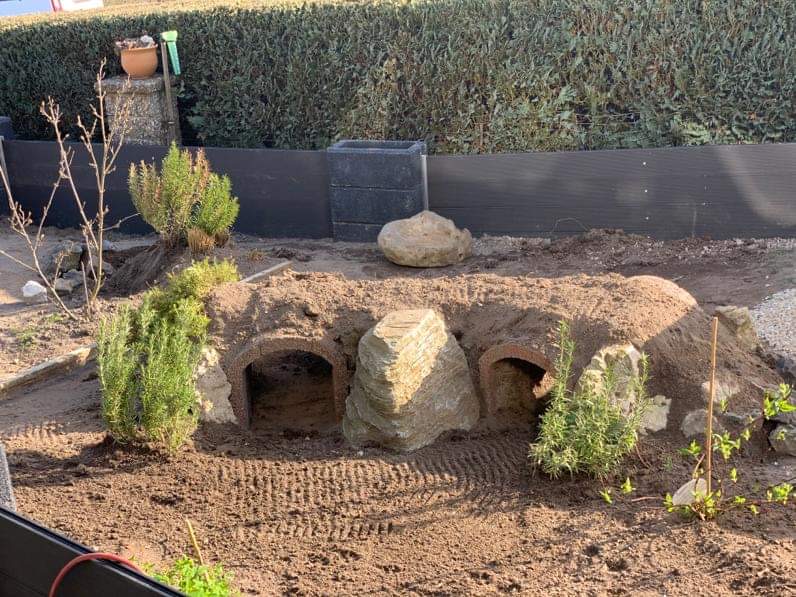
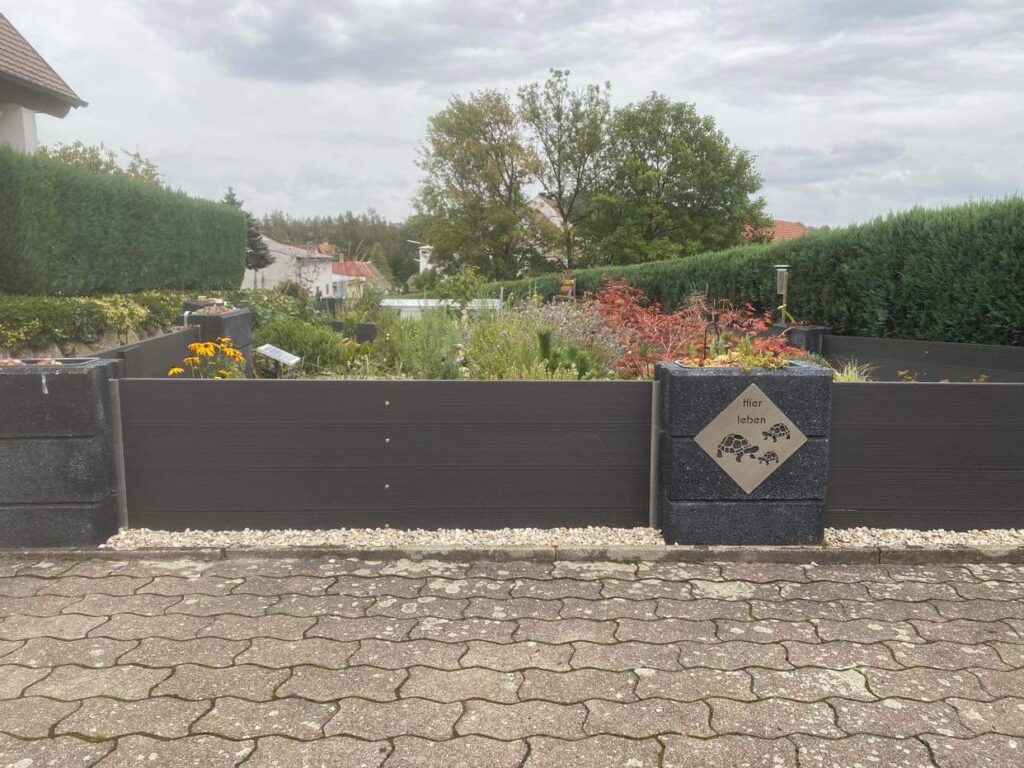
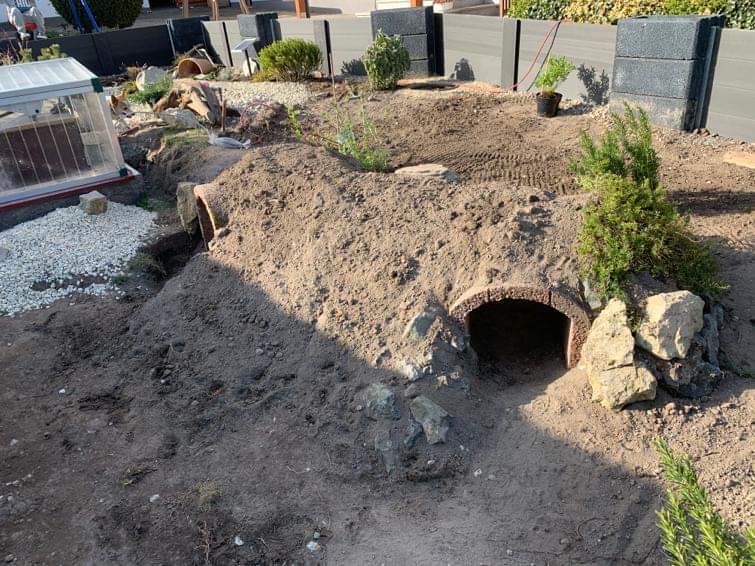
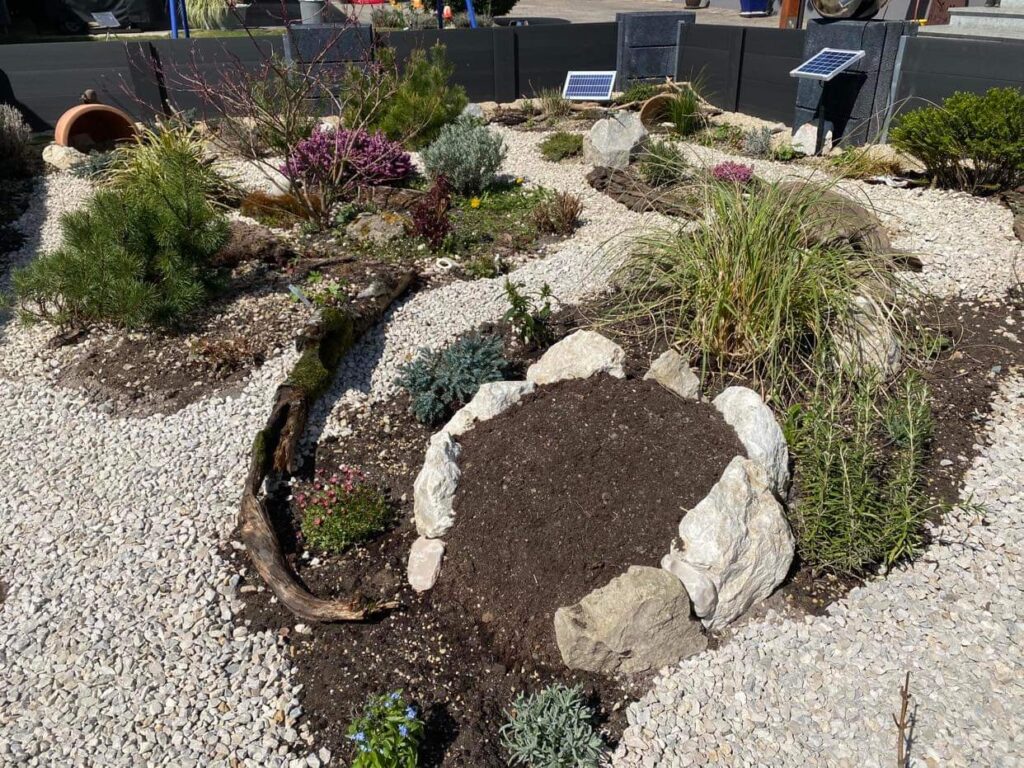
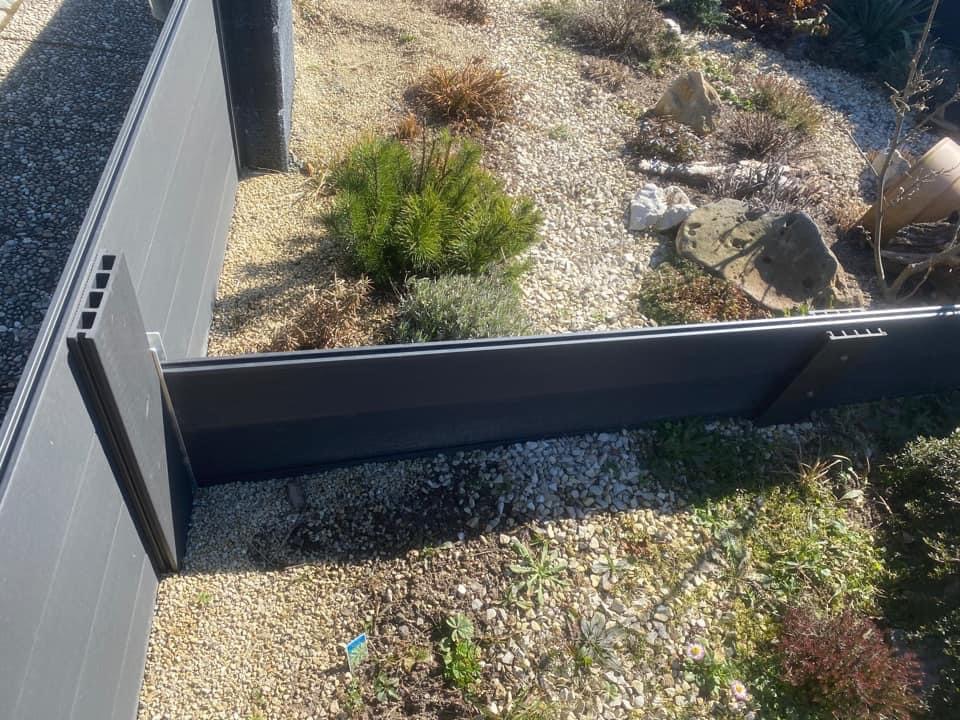
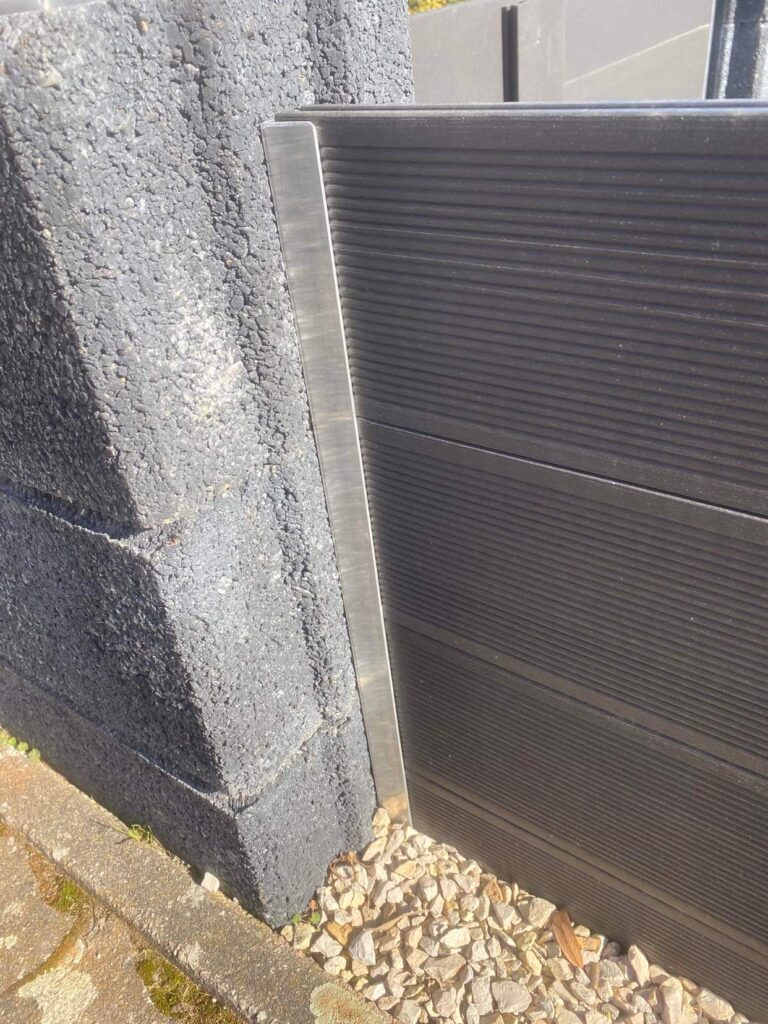
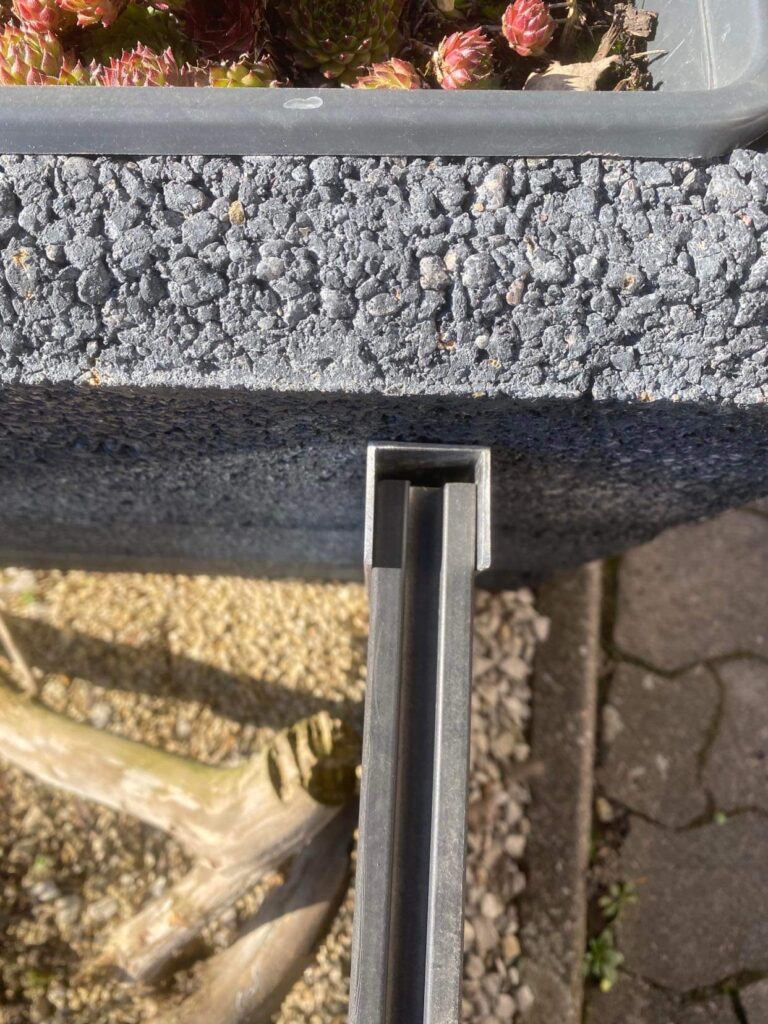
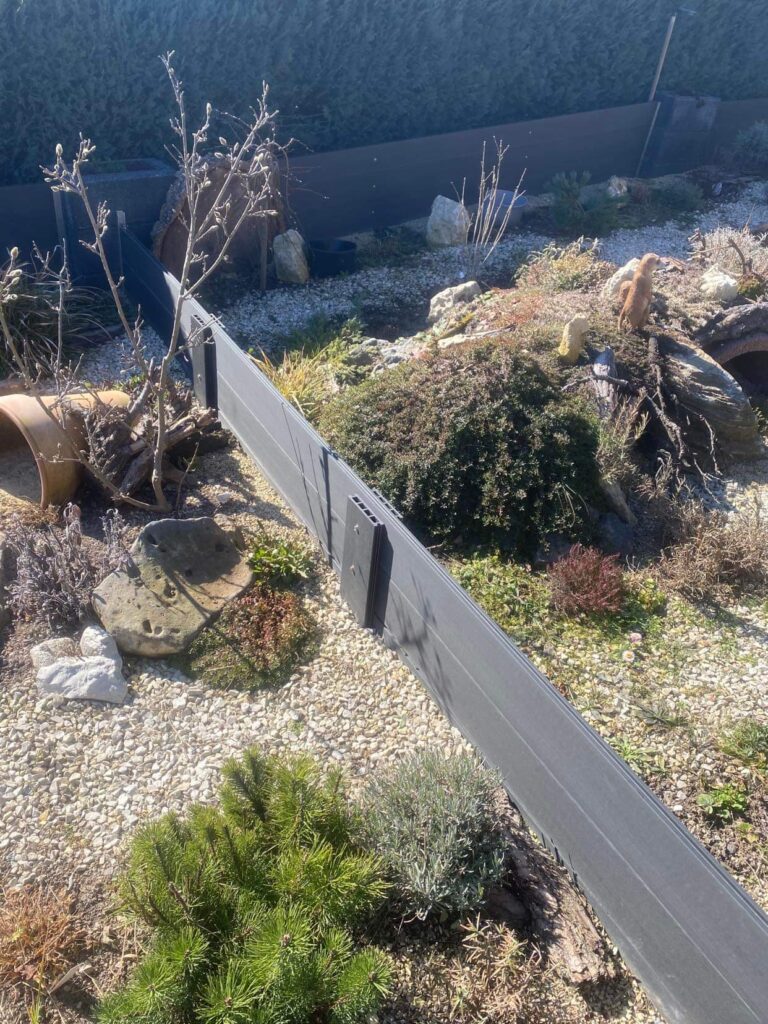
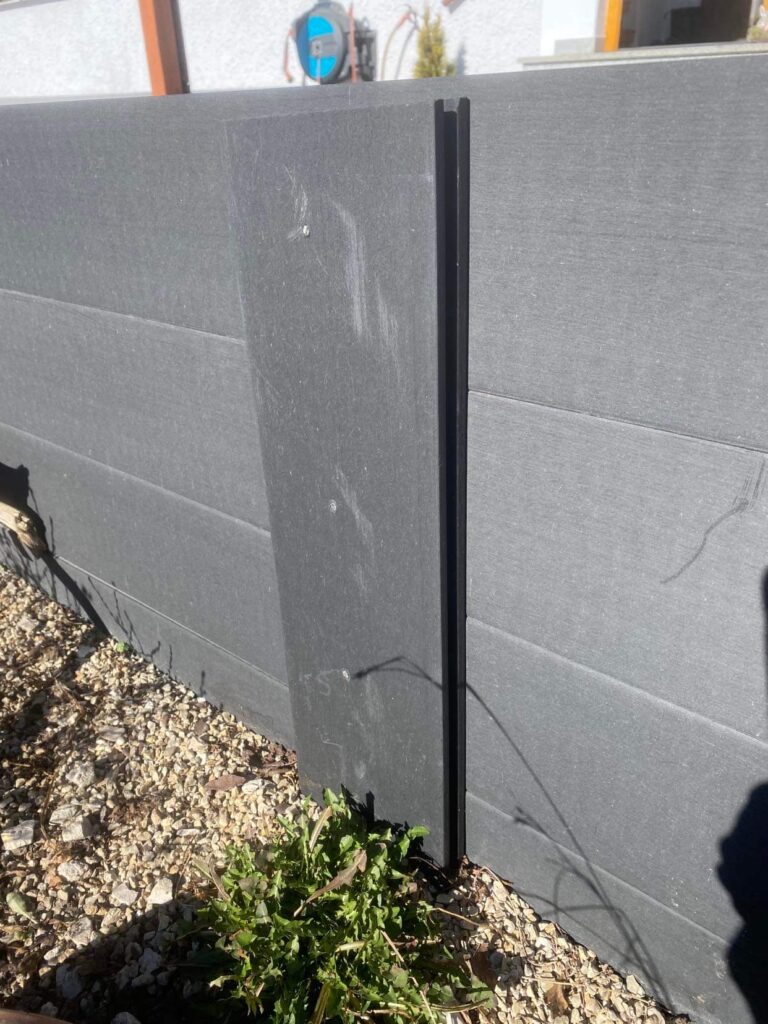
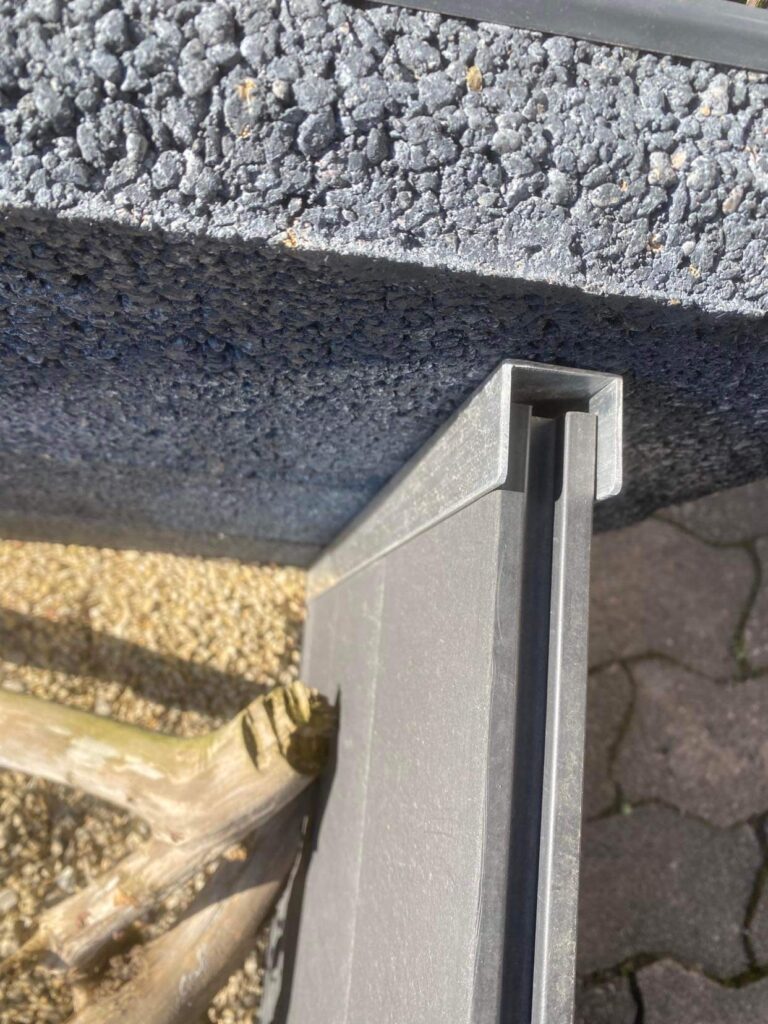
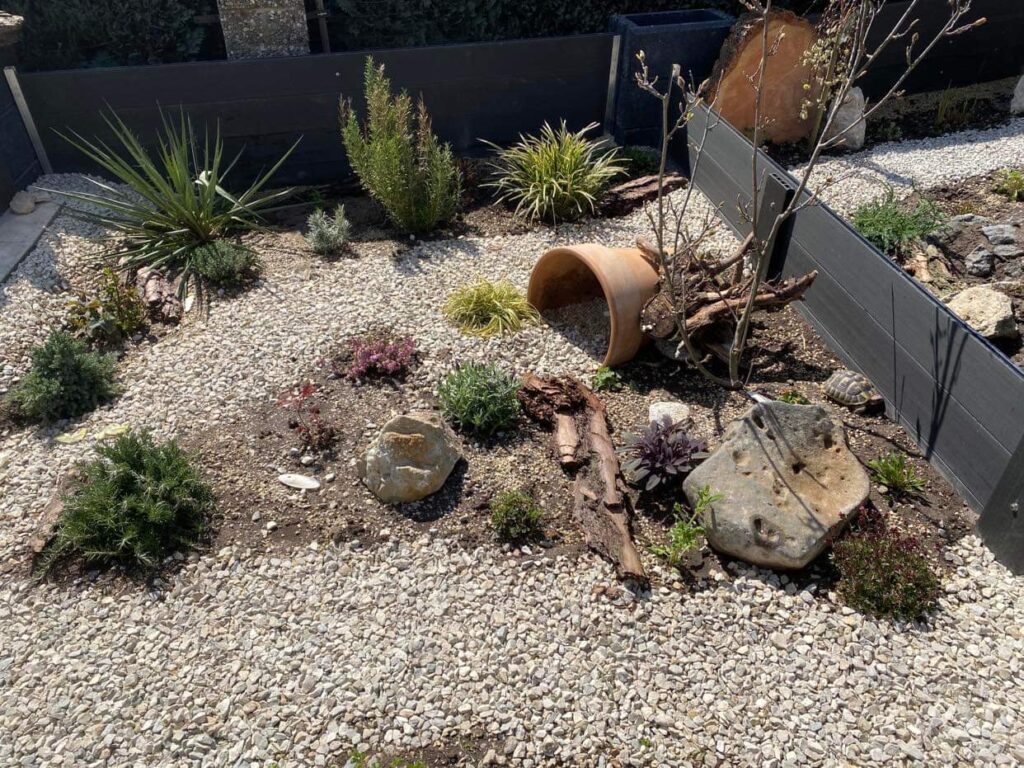
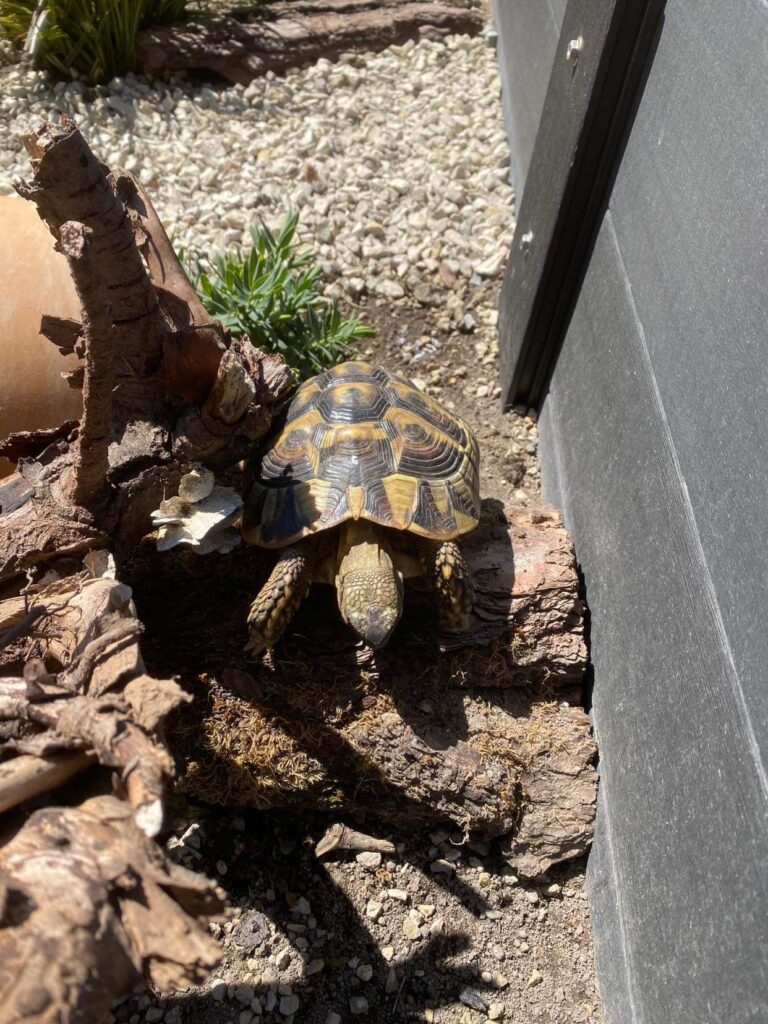
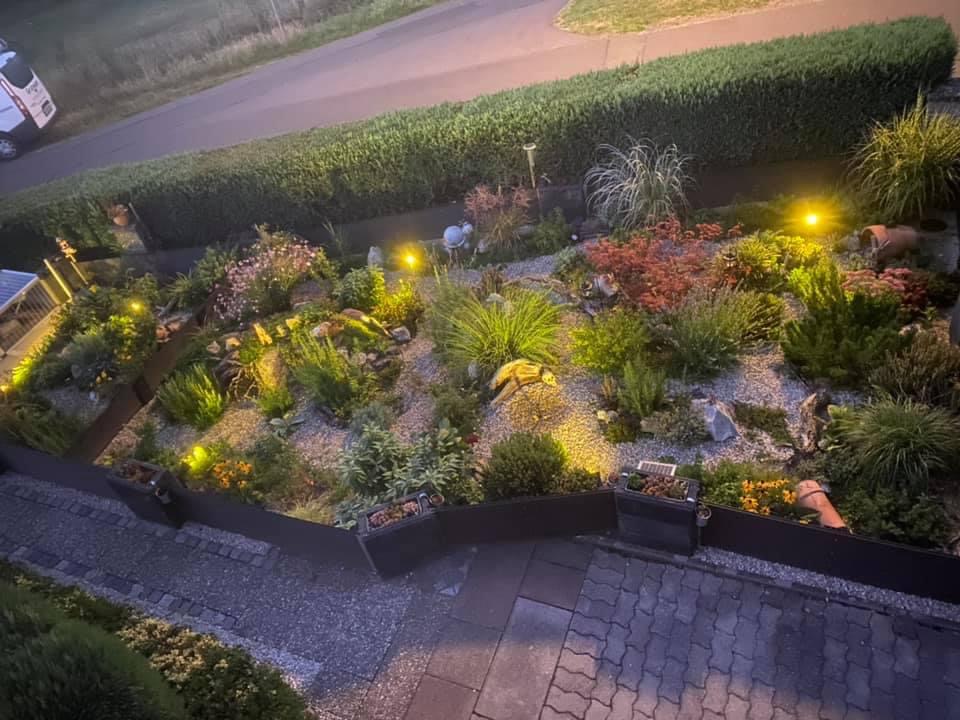
The Juvenile Enclosure
Enclosure for juveniles with high quality cold frame and protection against raccoons.
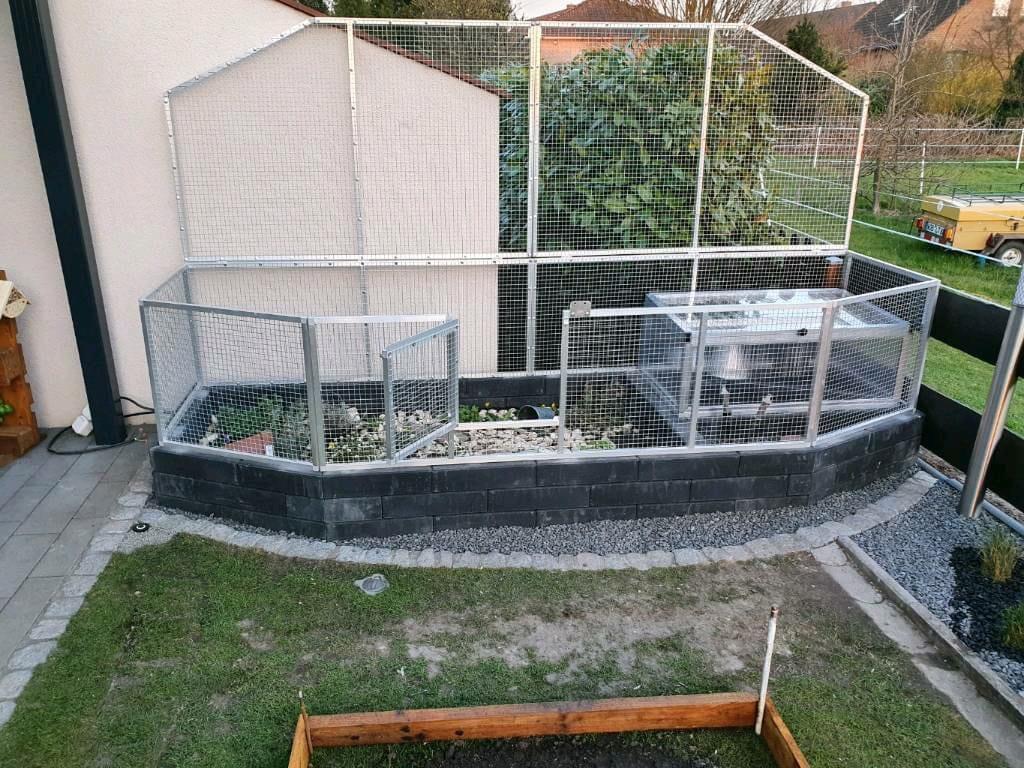
The Pit
For the frost- and predator-protected pit under the cold frame, you should inquire about the frost depth at the building authority; it ranges between 80 and 120 cm in Germany. The pit is bricked or cast in concrete and insulated from the outside with Styrodur. Alternatively, you can use prefabricated concrete elements. There are also cold frames with integrated pits with predator protection (Soli Animalis), where you only need to dig the hole and insulate around it. Below the cold frame, stainless steel aviary wire is used rat-proof, laid multiple times overlapping. Coarse gravel is placed on top, and for safety, the floor should additionally be lined with concrete slabs. If you build the pit slightly above ground level, you get a base that is helpful for the effortless installation of technology as it provides more height. To bring the necessary technology into the cold frame, you should plan empty conduits through which the cables will be later pulled. If there is a risk of flooding due to high groundwater, meltwater, or surface water, you should plan an empty conduit in the pit into which you can hang a smart water detector and an automatic submersible pump. If the pit fills with water unnoticed, it could be fatal for the dormant animals, so it is better to prevent and secure all eventualities with technology. After completion and insulation, the pit is filled with sifted, unfertilized loose topsoil, or with commercially available tortoise substrate if the soil quality is poor (clay soil, rocky soil). When all animals have settled down after temperatures drop, the pit can be covered with straw or leaves for additional insulation. In this case, do not use an infrared heat lamp due to the high risk of fire from combustible material in the radiation area. Generally, it is advisable to avoid the use of infrared heat lamps due to the high risk of fire and injury from very high temperatures. Monitoring the pit with a camera is helpful for observing a quiet hibernation. With a camera that alerts you to movement, you can see if an animal wakes up or if unauthorized people tamper with the pit, such as predators or thieves. Even if the animals are not to hibernate in the pit, it is recommended to at least create a 30 cm deep pit for frost and predator protection and to fill it with unfertilized topsoil. Then the tortoises can burrow in the soil following their instincts, and hiding and feeding plants have the opportunity to grow in the cold frame. Some hiding plants are ideal for the microclimate in the cold frame. If Mediterranean herbs (e.g., rosemary, lavender, or thyme) thrive, the microclimate in the cold frame is also pleasant for the tortoises. These plants survive the low temperatures during the animals‘ hibernation without any problems as they come from the same areas of origin as our animals. If the plants in the cold frame do not thrive, you should reconsider if the parameters for our tortoises are correct.
The hibernation in the pit should be maintained with a heater set to 5-6 degrees Celsius. The temperature should not drop below 4 degrees for European tortoises. A greenhouse heater controlled by an external thermostat is suitable for this purpose. This type of heating is particularly safe. The thermostat’s cable sensor is placed close to the ground at the height of the tortoises, for example, in a hiding plant. Lid heaters are also often used. For this, a sturdy sleeping house is fixed on the pit. During hibernation, the sleeping house is tightly closed and possibly additionally insulated. The lid contains a heating cable or a special heating mat that keeps the pit at the correct temperature. For this solution, a backup makes sense, i.e., a separately controlled heating option that activates if the lid heating is insufficient or fails. This backup can, for instance, activate at 4 degrees.
In any case, the hibernation in the pit should be monitored from above, at the sides of the pit, and in depth with smart thermometer probes with a temperature alarm. Good experiences have been made with the smart thermometer systems WeatherHub and MobileAlerts.
Below are photos of constructing a frost- and predator-proof hibernation pit under the cold frame.
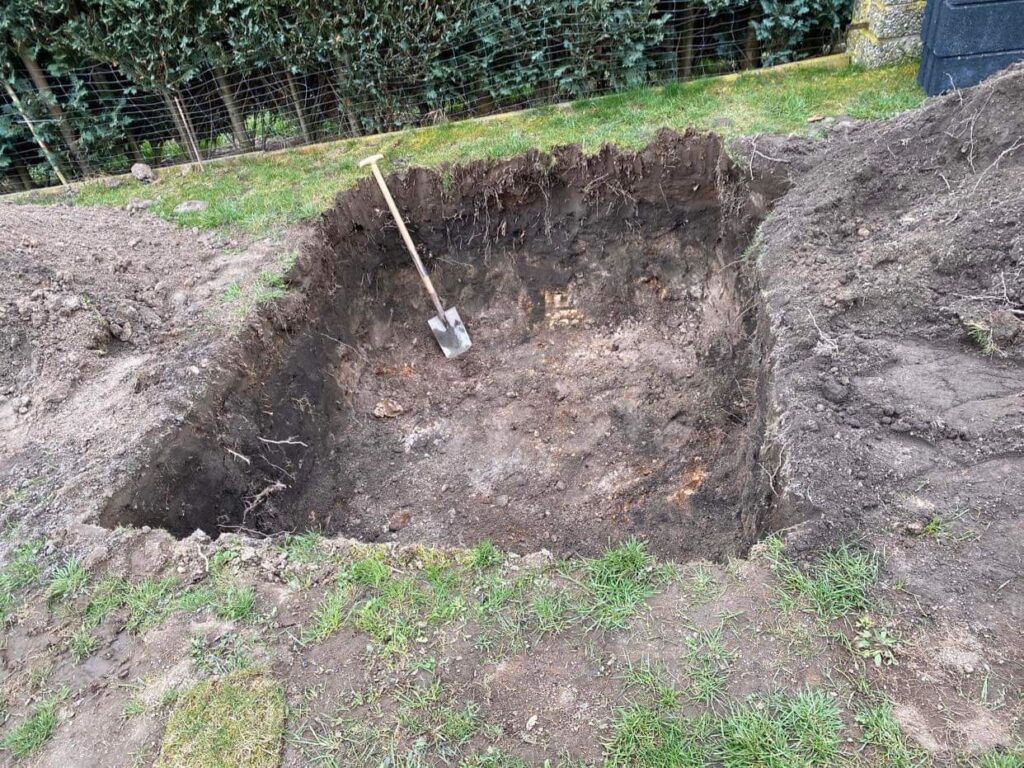



Upper block: Sabine Deubzer’s construction of a hibernation pit under the cold frame.
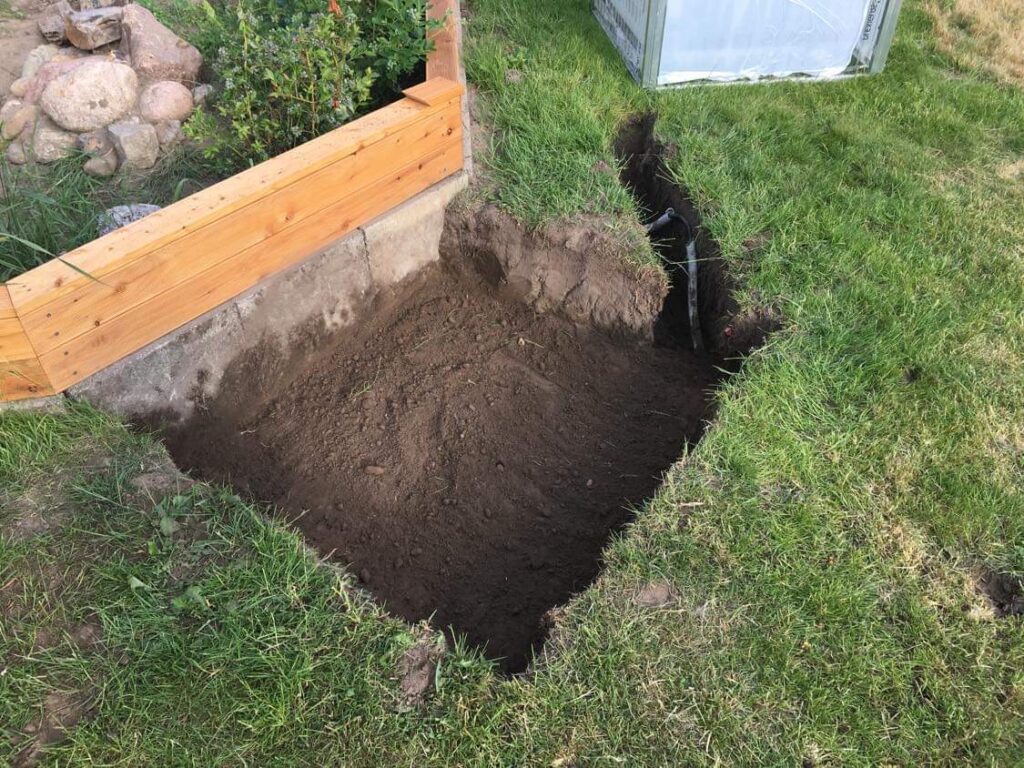
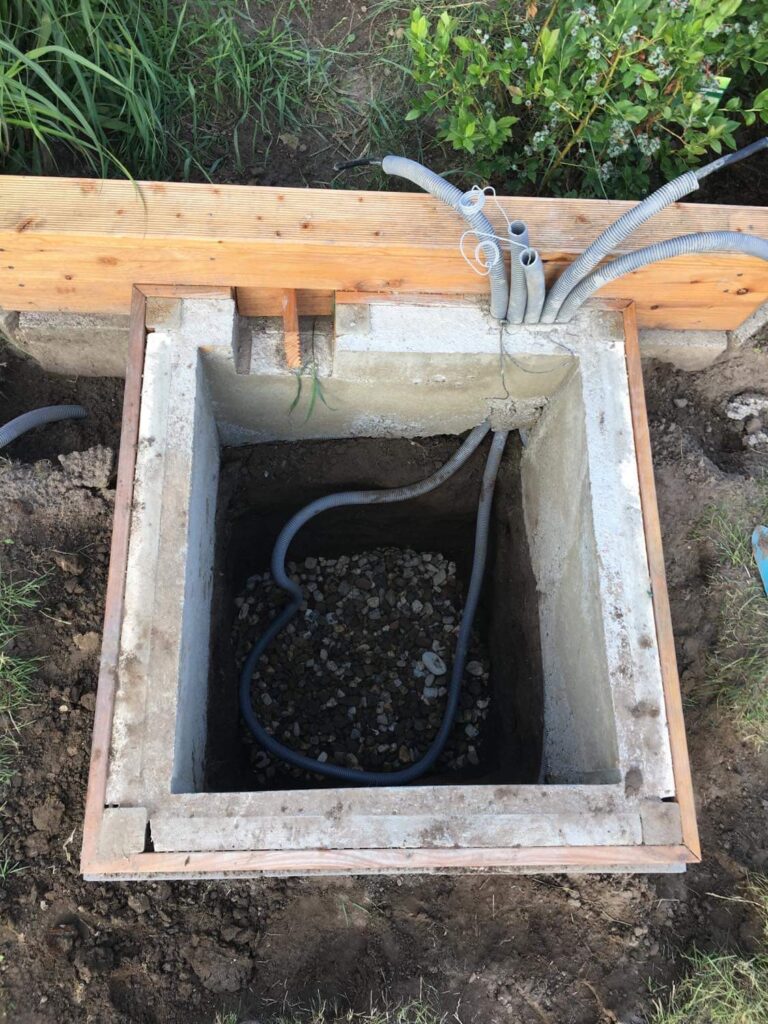

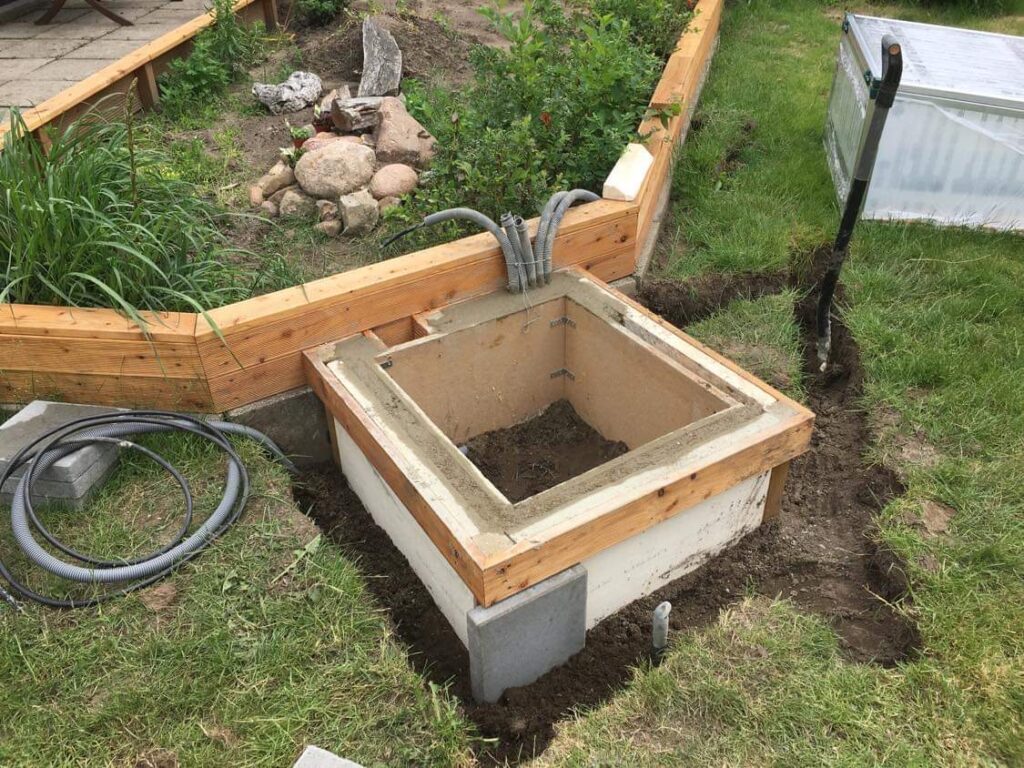

Upper block: Peter Küpper´s integrated pit under a coldframe.
Lower block: First 3 pictures, Peter Küpper’s big hibernation pit, under a double-sized cold frame. Following pictures, an external pit, initially with a multiplex lid, heated with a heating cable as a lid heater, later with a low cold frame top and a lid with heating below it. All photos Peter Küpper.
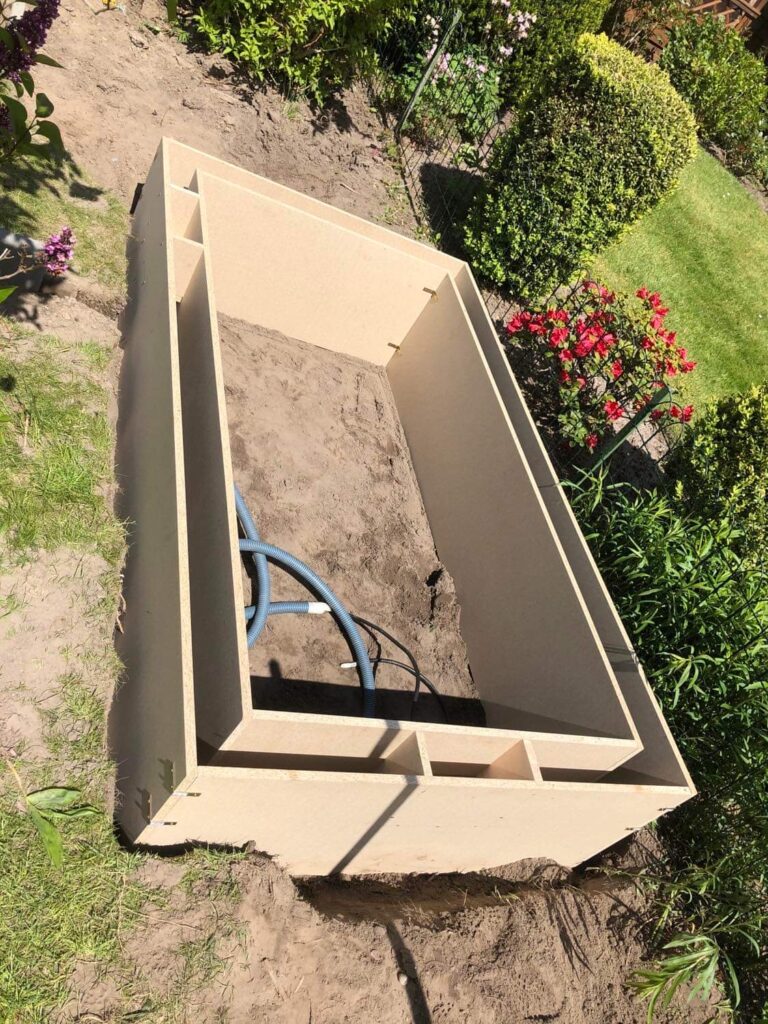
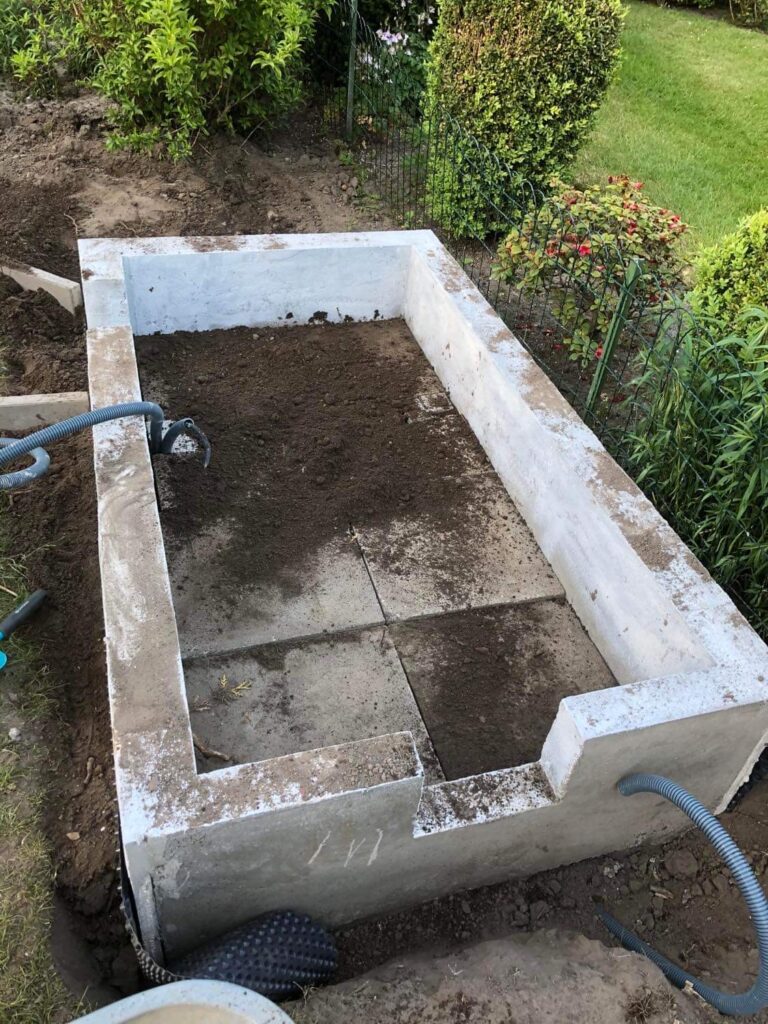

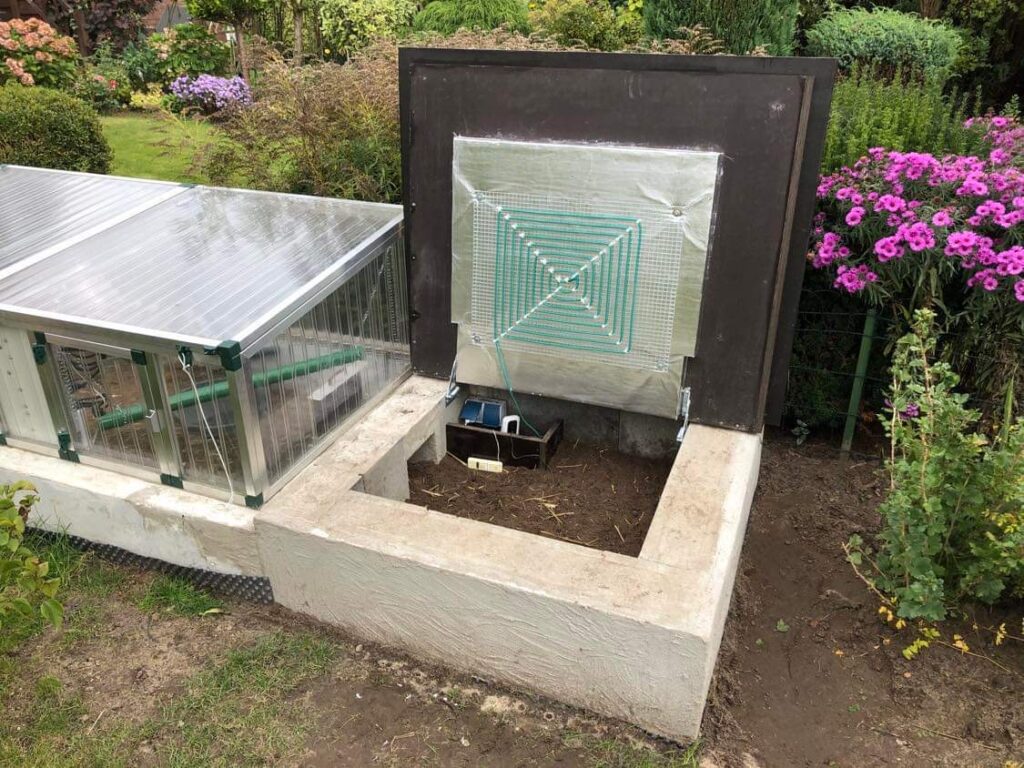
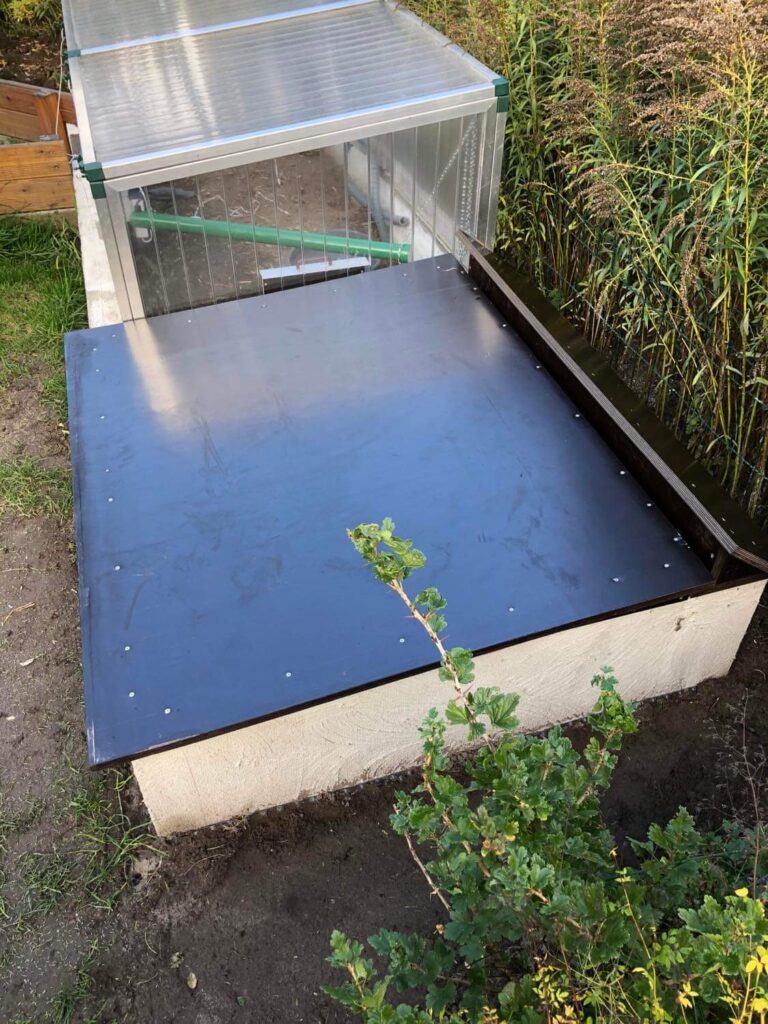
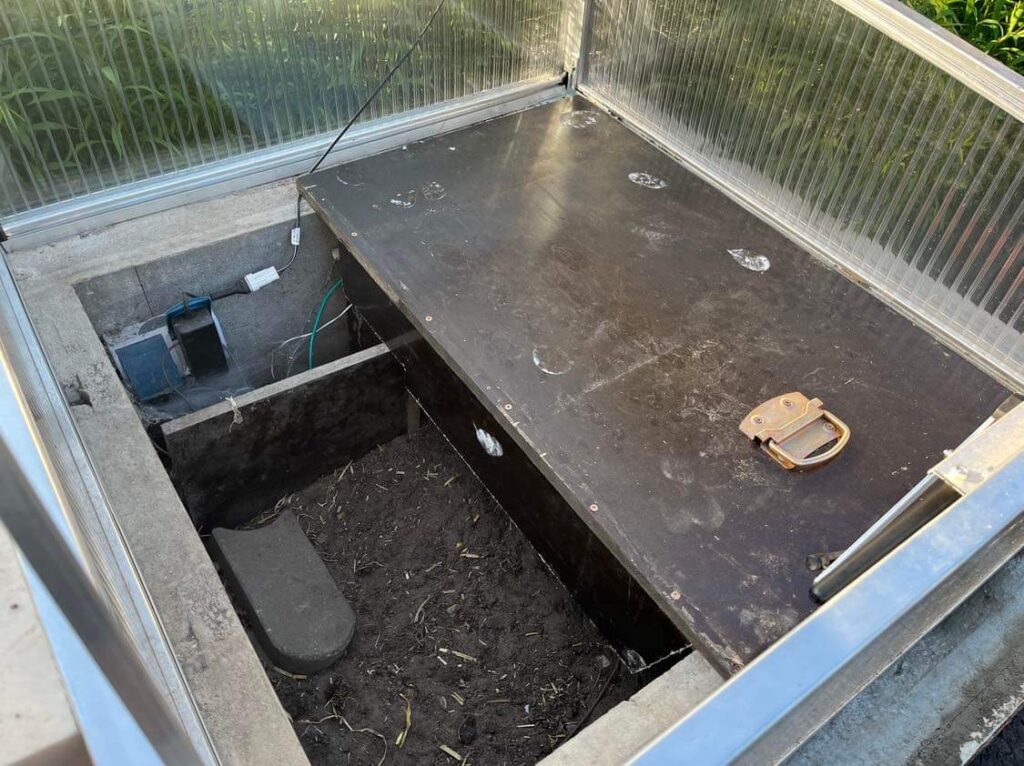
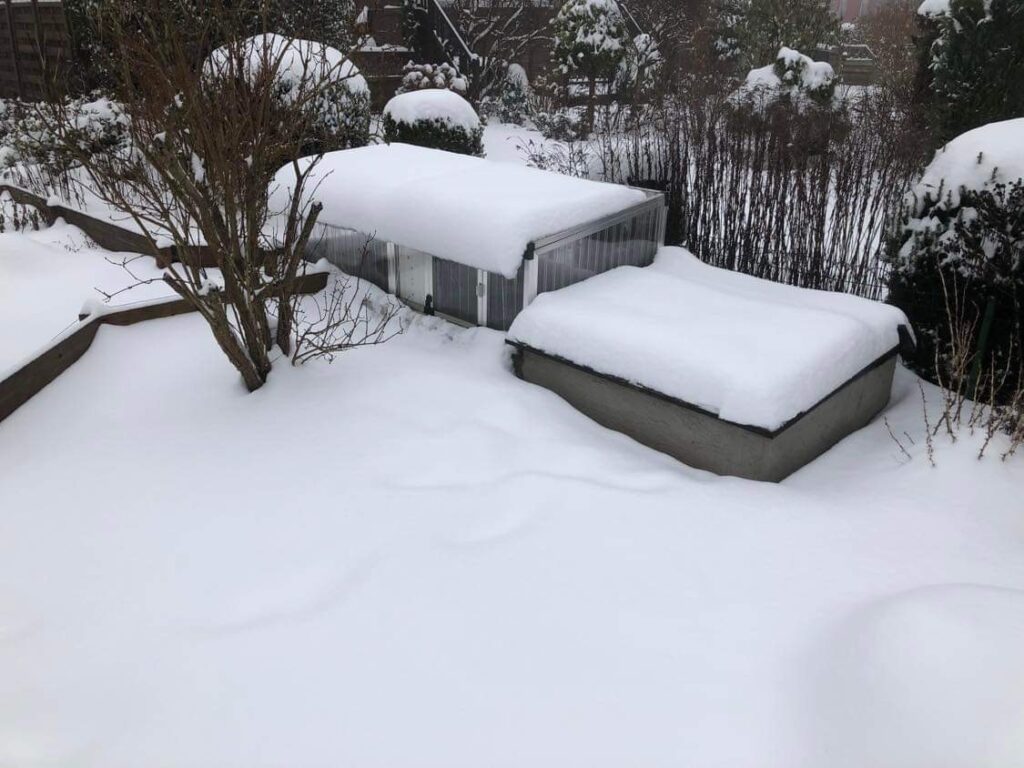
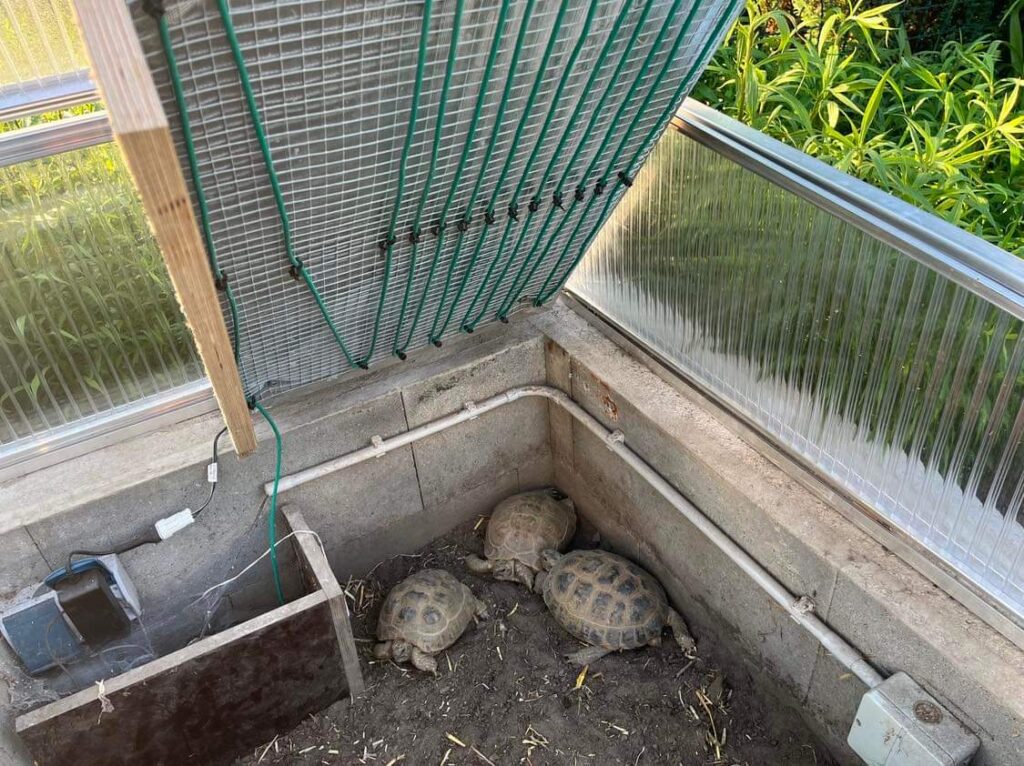
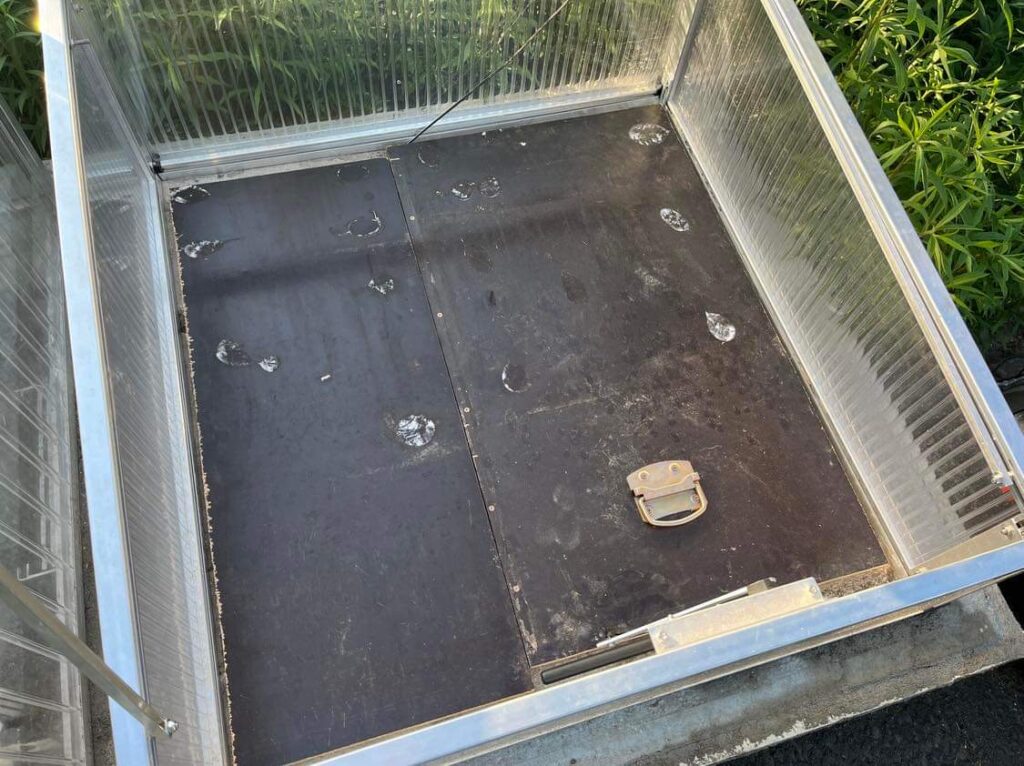


The Temporary Enclosure
If the cold frame does not get warm enough, there are technical problems, or a predator problem, you must house the tortoises in an emergency enclosure to keep them warm and protected until the issues are resolved. Sick animals occasionally need to be moved to accelerate their healing with high basic temperatures of 25 to 30 degrees Celsius and to simplify their care. For this purpose, a temporary enclosure of approximately 2 square meters is used, equipped like an enclosure with soil, a sun spot, heating, hiding places, and plants. If the stay is longer, a UV-B lamp should be provided. Naturally, the animals should be moved back to their heated cold frame and outdoor enclosure as soon as possible. Terrariums are generally unsuitable even as temporary accommodation due to their small size and the risk of heat buildup. Previously, it was often recommended to initially keep the tortoises in a temporary enclosure after hibernation, based on the fact that cold frames or greenhouses usually had no technology. Nowadays, experts reject the so-called cold keeping and practice warm keeping with a sun spot and heating in the cold frame, making such an enclosure generally unnecessary in modern husbandry.
